MARINA WORLD










From serene marinas to bustling ferry docks, SF Marina turns vision into reality. Our floating breakwaters and concrete pontoons are designed for easy installation, low maintenance, and lasting durability. Built to withstand the elements, we ensure your marina stays flexible, reliable, and still there after the storm. Bring your vision to life with SF Marina.
Dear Readers,
Welcome to the first issue of Marina World under the new ownership of SuperYacht Times. After more than two decades of leadership by Carol Fulford and Julia Hallam, we are honoured to take over a title that has played such a vital role in the global marina industry.
SuperYacht Times was originally founded in 2005 and grew from my passion for photographing yachts, a passion that I turned into a business. Today SuperYacht Times is a global media company with an international team of over 40 people, serving the superyacht community with trusted news, intelligence, events and publications. Over the years, we have seen marinas take on an increasingly prominent role in our sector, not only as vital infrastructure for yachting but as dynamic centres of investment, innovation and waterfront development.
With that in mind, acquiring Marina World felt like a natural next step. Our aim is to respect and build upon the magazine’s legacy while evolving it for the future. We have already launched a new website with daily news, transitioned Mooring Post to a weekly newsletter, and begun work on a stronger social media presence across platforms.
We are also investing in editorial, both in-depth print features and fast, insightful news coverage online. With a new, growing team and the backing of SuperYacht Times’ experience in publishing and market intelligence, we are committed to making Marina World more relevant and more useful than ever.
We believe this magazine is, and will continue to be, a central voice for marina professionals, investors, and developers around the world. We are excited about what is ahead, and we look forward to sharing this journey with you.
As we shape this next chapter, we would love to hear from you. Your insights, feedback and ideas are always welcome.
Kind regards,
Merijn de Waard Founder & Director


SuperYacht Times merijn@superyachttimes.com

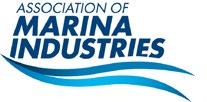


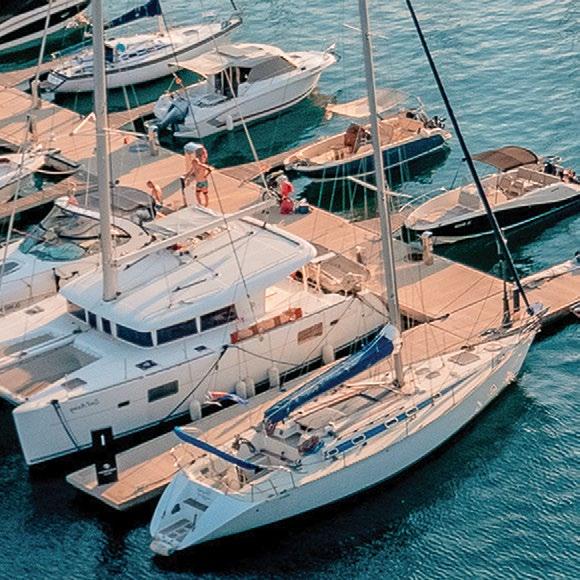



























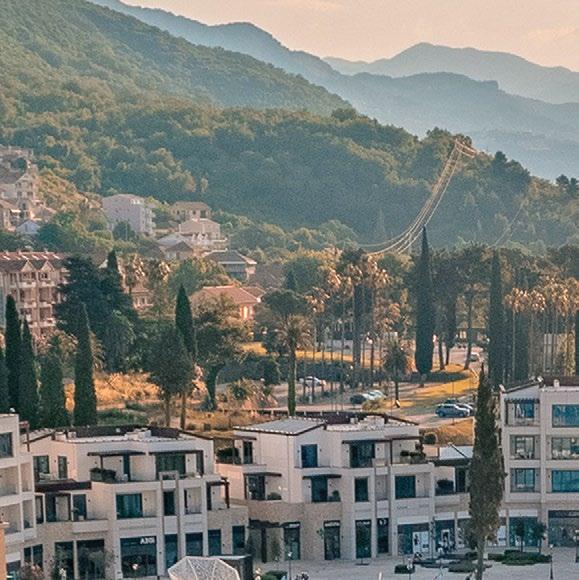












































































































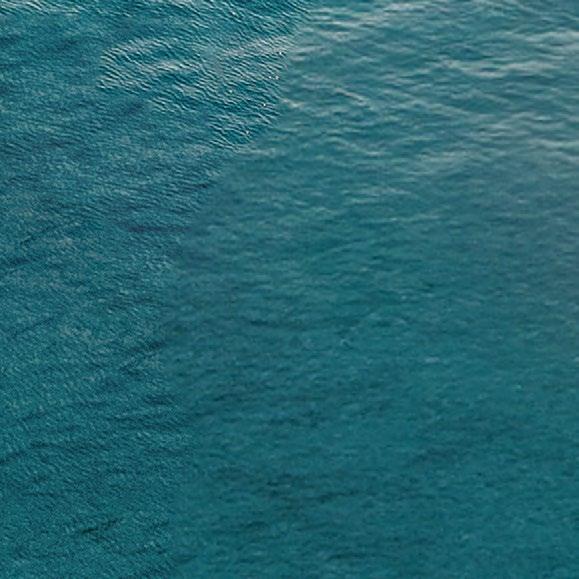
















EDITORIAL
EDITOR IN CHIEF
CONSULTANT EDITOR
EDITORIAL CONTRIBUTOR
EDITORIAL CONTRIBUTOR
EDITORIAL CONTRIBUTOR NEWS WRITER
FEATURES WRITER NEWS EDITOR
Francesca Webster
Carol Fulford
Charlotte Niemiec
Donatella Zucca
Mel Symes
Ellaine Zabate
Enrico Chhibber
Sophie Spicknell
CREATIVE DIRECTOR GRAPHIC DESIGNER
DESIGN PRODUCTION SALES & ADVERTISING
HEAD OF SALES
COMMERCIAL DIRECTOR MARINA WORLD
SALES MANAGER
SALES MANAGER
SALES MANAGER
CLIENT SERVICE MANAGER
Sales Italy
Sales Americas & Caribbean Sales France
Ivo Nupoort
Beatriz Ramos
Marieke de Vries
Julia Hallam
Justus Papenkordt
Charly van den Enden
Nuri Ozkaya
Johanna Borreli
info@admarex.com
Philippe Critot - pcritot@marinaworld.com catherinemetais@marinaworld.com
CORPORATE
FOUNDER & DIRECTOR TECHNOLOGY DIRECTOR FINANCE DIRECTOR
Merijn de Waard
Fabian Tollenaar
Laura Weber
SuperYacht Times B.V. Silodam 256, 1013 AS, Amsterdam, The Netherlands
31 (0) 20 773 28 64 info@superyachttimes.com www.superyachttimes.com
Cover Image: Port Nimara Marina render by Port Nimara
“Marina World” (ISSN “1471-5856” USPS 19194) is published 4 times a year in January, June, September, and November by “Loud and Clear Publishing Limited”, “12 Manea Close Lower Earley Reading RG6 4JN, United Kingdom”. Airfreight and mailing in the USA by World Container Inc., c/o BBT 150-15 183rd St, Jamaica, NY 11413-4037, USA. Periodicals postage paid at Brooklyn, NY 11256.
POSTMASTER: Send address changes to “Marina World”, World Container Inc., c/o BBT 150-15, 183rd St, Jamaica, NY 11413, USA.



07
14
Marina News: Top global marina news stories from the past quarter.
21
A Spotlight on Developments in Hong Kong: We take a look at four new marina developments underway in Hong Kong to better understand how they are due to reshape the city’s boating infrastructure.
29
The Fever For Big Yachts in the Mediterranean: The Mediterranean has long been a hotspot for yachting traffic, but each country has its own unique areas for growth. We take a look at some of the latest regional developments.
36
Redefining the Caribbean Landscape: David Mizrahi of SF Investments shines a light on the major marina development taking place in Anguilla and shares how it looks to redefine the regional landscape.
42
Industry News: The most important marina industry news from the past months.
Local Hub to Global Player: All eyes are on Cape Town ahead of the inaugural African Boating Conference later this year. Veda Pretorius shares her plans for the future of South Africa’s boating sector.



50
54
Foundations for the Future: As industry evolves to meet the demands of a fast-paced and everchanging world, the superyacht sector emerges as the embodiment of rapid transformation and expansion. Marina World takes a look at how marinas are adapting to the shift.
Celebrating a Career in Marina Development with Tony Mair: Marina World sits down with Tony Mair, one of the pivotal figures in New Zealand’s marine landscape, to discuss his contribution to the marina industry as he steps back from working life.
71
61
Unlocking the Future ‘Smart Marina’: In the first of a two part report, Charlotte Niemiec takes a look at how Artificial Intelligence is shaping the marinas of tomorrow.
76
The Transformation of Aqaba: Enrico Chhibber interviews Mr Sar Haffar of MAG Group Holding, the lead developers for the first phase of Marsa Zayed in the Red Sea to find out more about this ambitious project.
82
Buying and Selling Marinas: Mark Lavery, Associate Director – Retail & Leisure at UK company Christie & Co, gives an overview on asking prices, what they are, and how they are calculated.
Products and Services: A curated showcase of innovations and expert solutions – from smart marina tech to premium pontoons – designed to elevate operations and the customer experience.

Messolonghi: The marina, set against the backdrop of a lagoon and nature reserve in Western Greece, is undergoing a comprehensive phased expansion to upgrade infrastructure, capacity and amenities for visiting vessels.
Accessible via a three-kilometre canal, Messolonghi Marina offers a sheltered basin providing mooring for vessels up to 35-metres in length.
Phase 2.1 of the expansion, completed in October 2024, brought large-scale marina maintenance and a new entrance building. Ongoing work under Phases 2.2 and 2.3 include expanding land storage, constructing new quay walls and a slipway, as well as adding floating pontoons.
Current facilities include upgraded sanitary blocks, firefighting systems, berth-side utilities and enhanced security. A 60-tonne trailer has been introduced to support larger yachts and catamarans, alongside an existing 20-tonne unit. The marina also provides in-house maintenance services such as antifouling and hull cleaning.
Onshore, the site features a café, restaurant, boat chandlery and vehicle rentals, offering easy access to Messolonghi town. With recycling stations, certified sewage disposal and plans for eco-friendly services, Messolonghi Marina prioritises environmental responsibility alongside guest comfort.
The internationally managed marina aims to strengthen its appeal as a strategic base for Ionian and Aegean Seas, as final development stages are scheduled through late 2025 and will expand infrastructure and eco-friendly services.


€3.5m marina opens in Nydri
Lefkada: A new 73-berth marina in Nydri, on the southeastern coast of Lefkada, has officially opened as part of efforts to enhance maritime infrastructure and attract more visiting vessels on the Ionian Island.
The €3.5 million facility, delivered through the Interreg VI-A Greece-Italy programme, accommodates yachts up to 15-metres in length and is designed to strengthen Lefkada’s standing as a yachting destination in the eastern Mediterranean.
Speaking at the inauguration ceremony, Deputy Maritime Minister Stefanos Gkikas said, “This project marks a vital development that will foster prosperity not only in Nydri but across the entire island of Lefkada.”
Highlighting the importance of such developments, Gkikas added, “It is crucial for the Ionian Islands to experience such significant growth in maritime tourism. We are committed to promoting insularity, both within Greece and at the European level. We hope that the next programming period will introduce a dedicated programme to support island regions.”
The new marina is expected to improve Lefkada’s maritime links with destinations such as Corfu and Thesprotia, offering improved services and mooring capacity for domestic and international yachts.
Additional marine projects are progressing across the island, including a 100-berth marina in Vassiliki. On the mainland and surrounding areas, two major proposals are under discussion: a 400-berth marina near Palairos and a large-scale facility at Vliho Bay with capacity for over 800 vessels and an estimated investment of up to €50 million.
The Nydri marina represents a step forward in expanding Greece’s yachting network and supporting long-term tourism development across the Ionian region.
Fiji: Port Denarau Marina is undergoing a $6 million Fijian dollar expansion to increase berthing capacity and enhance marine infrastructure, positioning itself as a South Pacific maritime hub.
Port Denarau Marina in Fiji has embarked on a $6 million expansion project to meet rising demand from international vessels. The development includes extending the main jetty by 203-metre and adding seven new berths that can accommodate vessels up to 115-metres long. Once completed, the marina will offer 62 berths, 27 for vessels over 24-metre and 35 for vessels from 16-metre.
Dredging is also underway to deepen approach channels and turning basins, which will enhance access for both commercial and leisure boats. The upgrades aim to streamline operations and enhance safety at the facility.
Cynthia Rasch, CEO of Port Denarau Marina, explained the expansion was based on findings from the 2019 Fiji Yachting Survey. “We’re excited to begin work on this significant upgrade. The data affirms what we’ve consistently observed – Fiji is rapidly emerging as a key hub for superyachts in the South Pacific. This $6m investment delivers the critical infrastructure needed to support that growth and future-proof our operations.”
Chairman Malakai Naiyaga described the project as a milestone for both the marina and Fiji’s marine tourism sector and added, “This is the beginning of a broader investment programme to elevate our facilities to world-class standards and cement Fiji’s status as the superyacht capital of the South Pacific.”
The expansion, set for completion by the 2025 cruising season, aligns with the marina’s focus on sustainability, innovation and service excellence, reinforcing its status as a maritime destination.


Sydney: Construction has commenced on the $350 million AUD Putney Wharf development, a mixeduse project on Sydney Harbour that is set to transform the historic Halvorsen’s Boatshed site into a contemporary residential and lifestyle precinct.

Jointly delivered by Abadeen, PERIFA (part of Versatile Group), Phoenix Property Investors and Mitsubishi Estate Asia, the precinct will feature 67 residences, waterfront dining, retail outlets and a 36-berth marina. Putney Wharf also includes three key residential components: Halvorsen’s Apartments, Waterview Terraces and The Residences.
Described as a flagship project by Versatile Group’s Chairman and CEO Marco Fahd, the development will be delivered by the company’s construction arm. “As one of the most transformative and significant waterfront projects in Sydney, we are beyond honoured that our construction arm will be responsible for the successful delivery of this project. We understand the historical significance of the site and we’re incredibly proud to be breathing new life into it while celebrating its heritage,” Fahd stated.
PERIFA’s Fabrizio Perilli highlighted the project’s community vision: “We are committed to delivering a truly exemplary residential waterfront precinct for future homeowners, marina berth owners and the local community.”
Joe Tack of Abadeen also noted, “Putney Wharf is already having a transformative impact on the suburb of Putney. We have received particularly positive feedback from the local community and beyond. There is a strong excitement and anticipation for what is to come.”
Construction is expected to be completed in early 2027, with further townhouse releases planned for late 2025.

Chicago: Chicago’s long-anticipated Navy Pier Marina is nearing completion, with its official opening to transient boaters scheduled for 13 June 2025. Situated along the Navy Pier, the new facility marks an investment in recreational boating on Lake Michigan.
Privately developed by NPM Venture LLC, the marina features floating aluminium piers by Structurmarine, accommodating vessels up to 25-metre. The broadside mooring system allows for easy docking, with support from full-service amenities including power, water, Wi-Fi and pump-out stations.
A central highlight is the two-storey amenity building, crafted from repurposed shipping containers by S.I. Container Builds in collaboration with Town Studios. Blending sustainable design with practical function, the building houses restrooms, showers, a lounge, a ship’s store and a marina office. Additional touches include a pet relief area and bicycle repair station.
Construction has continued steadily under general contractor J.F. Brennan, with electrical components supplied by Marina Electrical Equipment. Regulatory oversight from the U.S. Coast Guard, Illinois Department of Natural Resources, and U.S. Army Corps of Engineers has ensured compliance and safety.
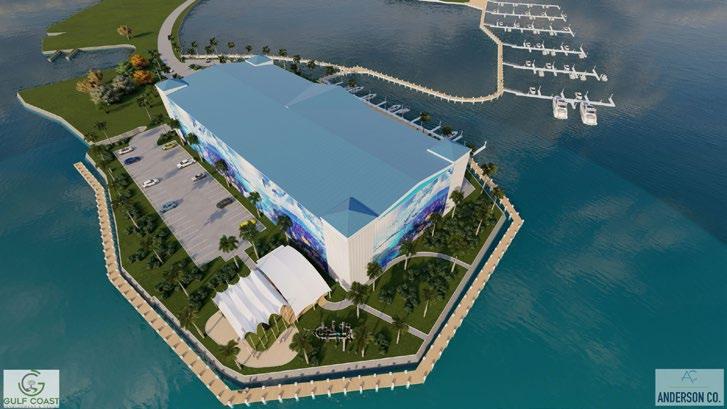
Beyond daily moorings, the marina will offer short-term tie-ups for dining visits and overnight stays. With nearby attractions such as the Centennial Wheel and Chicago Children’s Museum, the facility aims to become a nexus for both local and visiting boaters.
Led by Chicago native Randy D. Podolsky, the project has been in development since 2016, promising to enhance public access while revitalising one of the city’s waterfront destinations.

Mississippi: After more than a decade of planning, Pascagoula is moving forward with its $4.4 million Lowery Island Marina project, designed to revitalise the city’s waterfront and spur local tourism.
Backed by state funding and the RESTORE Act for Phase 1, the initiative marks a major step in transforming the west bank of the Pascagoula River into a space for recreation and economic growth.
A highlight of the development is the new dry boat storage facility at the former Clark Seafood site, led by Anderson Construction. The facility will include valet service, aiming to streamline access for boaters.
“We’re incredibly excited to partner with the City of Pascagoula on this transformative marina project. Pascagoula has so much to offer, and we’re proud to help shape a waterfront experience that locals and visitors alike can enjoy for generations,” Billy Anderson stated.
Phase 1 of the project also features the construction of the Pascagoula River Municipal Marina and the revitalisation of the Lighthouse Marina, which has reopened under SCB Marina, LLC. The Lighthouse Marina is set to have new waterfront dining, a bait shop and a fuel dock.
Officials view the development as a long-term investment in Pascagoula’s future, enhancing public access, encouraging sustainable tourism and supporting local businesses. Further grant applications are underway as the city continues to prioritise its riverfront as a key asset for economic and recreational development.
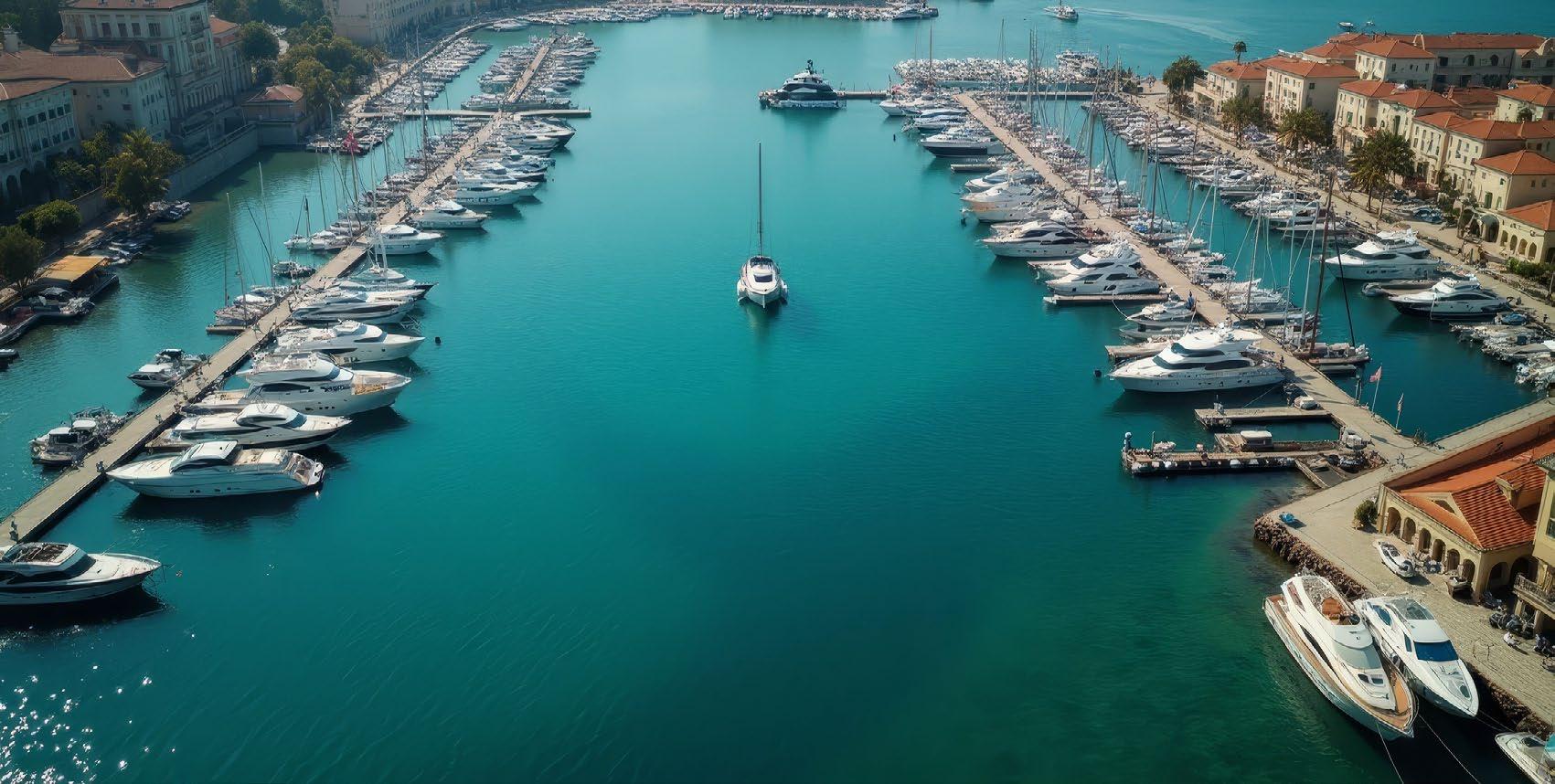



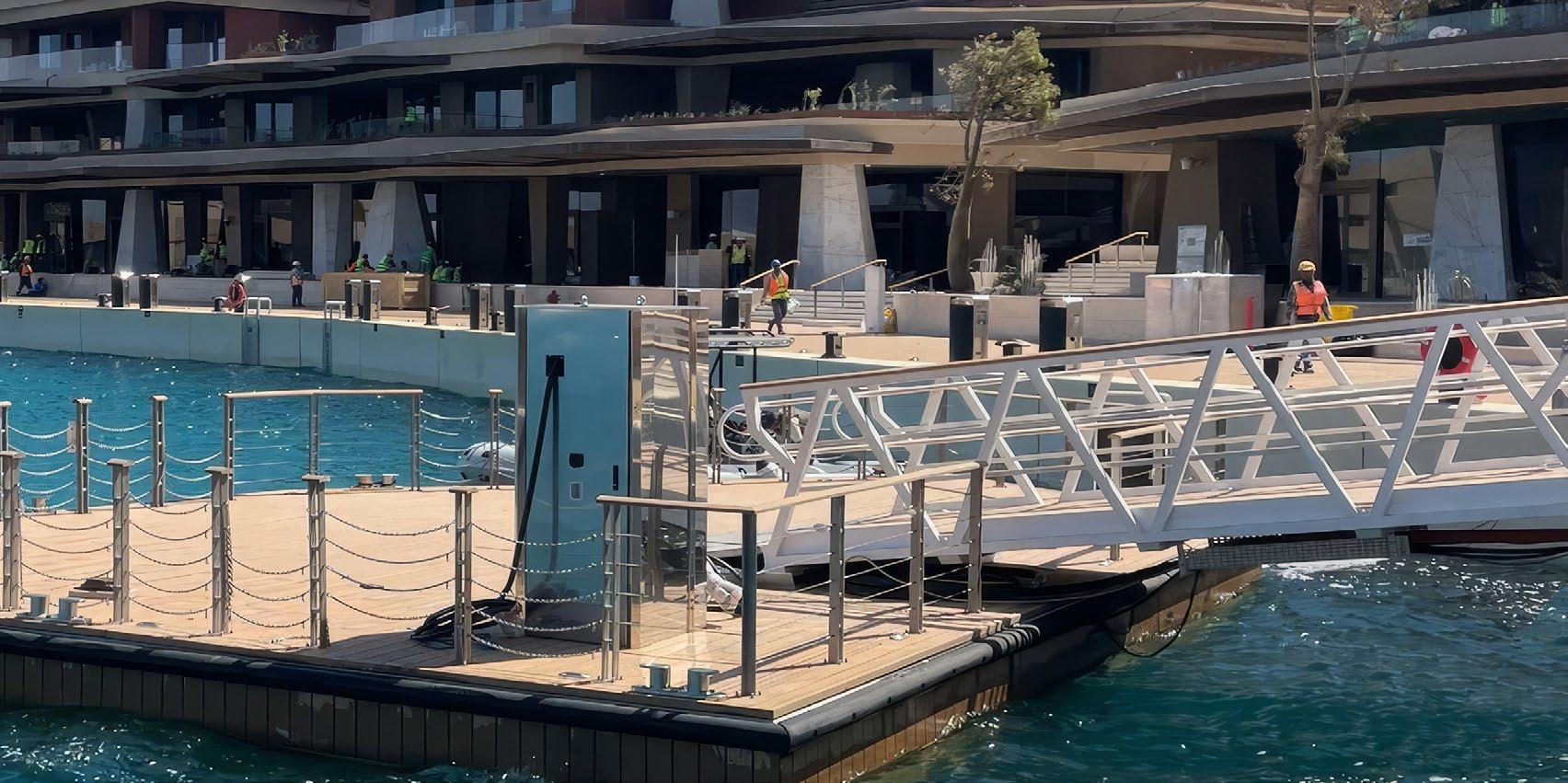


Grand Bahama: A superyacht marina will headline the sweeping $827 million USD transformation of Grand Bahama’s Grand Lucayan resort, aiming to re-establish the island as a destination for luxury maritime tourism.
The project, unveiled during a Heads of Agreement signing between the Government of The Bahamas and US developer Concord Wilshire, includes 16 slips for large private vessels and is expected to attract a high-end yachting clientele.
Planned as part of a broader resort masterplan, the marina will be complemented by waterfront amenities such as over-the-water cabanas, beach clubs, dining and upscale retail. Prime Minister and Minister of Finance, the Hon. Philip Davis described the importance of the development to national ambitions: “What we’re building here at the Grand Lucayan is not a stand-alone project — it’s part of a wider, more connected vision for Grand Bahama.”
Beyond the marina, the redevelopment will introduce three hotel towers, a revitalised 25,000 square-foot casino, a golf course, music venues, water parks and a cruise resort terminal. The multipurpose concept is customised towards expanding the island’s economic base through tourism, infrastructure and enterprise.
The project is expected to create over 3,000 jobs, with 1,300 in construction and 1,750 permanent roles. At least 80% of positions are reserved for Bahamians, reflecting a strong focus on growth and skills development. Concord Wilshire is committed to working closely with local stakeholders to ensure lasting community benefits.


Dubai: D-Marin has unveiled an exclusive anchorage zone at J1 Beach, Dubai’s newest luxury beachfront destination, in collaboration with MEREX Investment. The latest addition allows yacht owners to anchor offshore and access J1 Beach by sea to enhance convenience and elevate the waterfront experience.
The anchorage is located near D-Marin Port de La Mer and features 160 berths as well as transfer services. Guests arriving by yacht are welcomed by the D-Marin team and transported ashore via a dedicated tender service, which offers a refined and comfortable transition from sea to shore.
J1 Beach’s offering also includes 13 licensed restaurants and beach clubs inspired by global destinations such as Tulum and New York. Highlights include the renowned Gigi Rigolatto, Sirene by Gaia and Bâoli.
The anchorage also marks a key milestone in D-Marin’s growing presence in the UAE, now operating five marinas across Dubai. The development aligns with the emirate’s ambition to expand maritime infrastructure and offer tailored experiences for international yachting enthusiasts.
Abu Dhabi: Ora Developers has unveiled Bayn, a major waterfront development set between Abu Dhabi and Dubai in the Ghantoot area. Positioned as a sustainable and smart coastal community, Bayn marks a significant step in redefining residential living in the UAE.
Launched on 24th April in partnership with ADQ, the first phase includes 464 villas and townhouses tailored for families and investors. The full project spans over 4.8 million square-metre and features more than 7-kilometre of waterfront, a beach town, lagoons, promenades and a 1.2-kilometre stretch of beach along the Arabian Gulf.
Bayn’s design connects sustainability with modern technology, offering villas, townhouses, mansions and apartments set within a “smart city” framework. The emphasis on walkable neighbourhoods, efficient infrastructure and environmentally harmonious planning reflects the growing trend in the UAE towards future-ready urban living.
Eng. Naguib Sawiris, Chairman and CEO of Ora Developers, highlighted the project’s dual appeal: “Our vision with Bayn is to create a destination that enhances how people experience time and space. We are bringing together the best of both worlds: the dynamism of city living and the calm of a coastal retreat.”

By Enrico Chhibber

Hong Kong has long been regarded as the region’s historic superyacht hub, combining a deep-rooted maritime culture with a strong ownership base, strategic location and a legacy of established marina facilities. According to the Asia-Pacific Superyacht Report 2025, 78 superyachts were recorded as having passed through Hong Kong, and as of early 2025, 92 superyachts over 30 metres are owned by Hong Kong nationals, 75 of which are based locally.
Yet despite these strengths, there is growing consensus among industry stakeholders that Hong Kong’s marina
infrastructure is falling behind, particularly when compared to hubs such as Singapore and Thailand. Berths suitable for larger vessels remain limited, regulatory complexity persists and neighbouring regions are making significant investments in their waterfront offerings.
As the race to become Asia’s leading destination for yachting and marine tourism accelerates, Hong Kong is taking a strategic step forward. Four new marina projects are currently proposed or under development, each with the potential to reshape the city’s waterfront and reassert its position in the region’s superyacht landscape.
Hong Kong is currently home to eleven marinas with facilities to accommodate yachts of various sizes. These include Lantau Yacht Club, Gold Coast Yacht and Country Club, Aberdeen Marina Club, Aberdeen Boat Club, Hebe Haven Yacht Club, Hong Kong Marina, Marina Cove in Sai Kung, and the Royal Hong Kong Yacht Club’s headquarters at Kellett Island. The Club also operates two additional facilities: Shelter Cove in Sai Kung and Middle Island near Deep Water Bay. Clearwater Bay Golf and Country Club also features a private marina with dedicated berthing facilities.
Whilst Hong Kong has several marinas capable of accommodating yachts, limitations for larger vessels remain a key concern. This issue was raised during the first panel, Hong Kong as a Destination, at the AsiaPacific Superyacht Summit 2025. Joe Yuen, Director of Lodestone Yachts, a company specialising in superyacht shore support services across Hong Kong and South China, explained: “Superyacht facilities are limited. Most of our marinas can accommodate vessels up to around 65-metres. Anything over 70-metres does not really have a place to go. Coupled with licensing challenges, such as restrictions on tender usage and the need for captains to meet local permit requirements to operate within Hong Kong waters, it can be difficult for larger superyachts to anchor and tender in.”
Despite these restrictions, Yuen noted that incremental progress is being made. “Since the first edition of the Asia-Pacific Superyacht Summit in 2024, the local government has begun making minor adjustments to ease some of the regulatory barriers,” he said. “There is now an effort to update local policies in order to attract more visiting superyachts. Both infrastructure and regulatory frameworks need to be addressed to meet the evolving demands and to make Hong Kong a more attractive superyacht destination.”
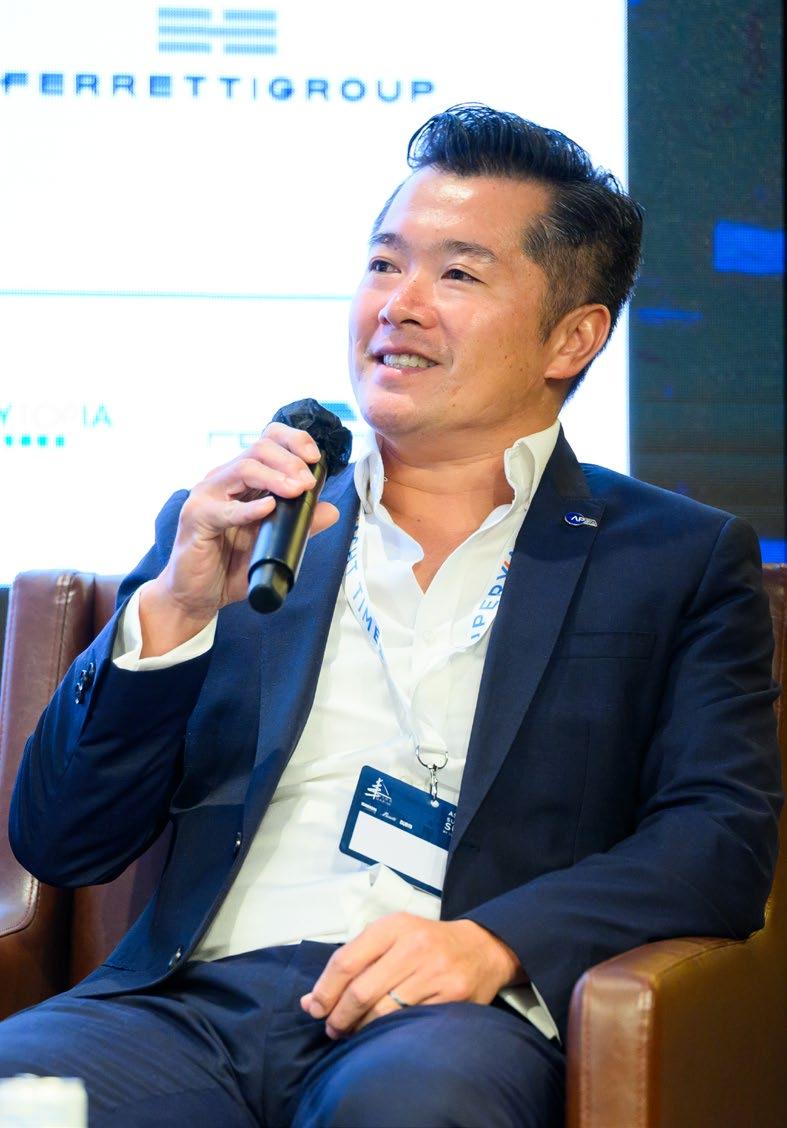
Lawrence Chow, Chairman of the Hong Kong Boating Industry Association, offered a broader perspective during the panel. He noted that beyond issues of capacity and vessel size, a key structural limitation is the lack of new marina developments over the past two decades. “For the past 20 years, there haven’t been any new marinas. We’ve always had the same eleven marinas in Hong Kong,” he said, clarifying that the only exception is Lantau Yacht Club, which underwent a redevelopment but does not constitute a wholly new project.
Chow added that positive developments are now taking place, as the government has begun to recognise the need to address the longstanding lack of investment in marina infrastructure. In response, several new marina development projects have recently been announced, signalling a shift in policy and a renewed focus on strengthening Hong Kong’s position within the regional yachting landscape. Yuen echoed this sentiment during the panel, noting: “I know I’m slowly seeing changes, so we’re positive about the direction we’re going.”

Over the past year, four major marina development projects have been announced, marking a significant shift in Hong Kong’s approach to waterfront planning. These initiatives reflect a growing recognition of the need to expand capacity, modernise infrastructure, and strengthen the city’s position as a competitive superyacht destination in Asia.
The four key projects include:
Skytopia Marina (within Airport City)
Set to become Hong Kong’s largest yacht bay, Airport Bay Marina will feature over 500 berths and play a key role in establishing an air-ocean tourism hub. It will accommodate both visiting yachts and longterm needs, welcoming a diverse range of yachts up to 60-meters in length, along with more than 20 dockside moorings for yachts up to 70-meters and beyond. The Skytopia blueprint integrates the marina with other luxurious experiences, including private jets, art trading, a marine resort, and a luxury hotel, alongside a rich array of attractions, retail options, dining experiences, entertainment, pop culture, and leisure activities.
Hung Hom Waterfront Marina (Victoria Harbour)
Positioned as a “Monaco-style” marina, this project encompasses 14 hectares of land and is set to integrate a marina with hotel and commercial components. The marina itself will occupy a 10-hectare water body and is expected to offer between 150 and 200 berths, accommodating yachts of up to 50-metres in length. Positioned near the city’s urban core, the site has the potential to offer both yachting access and lifestyle appeal in a single, strategically located development.
Aberdeen Typhoon Shelter Expansion
Aberdeen Typhoon Shelter Expansion
The Aberdeen project comprises two distinct components: the upgrade of the existing public mooring area, spanning approximately 14 hectares, and the development of a brand-new marina. The proposed marina will feature a 10-hectare water body with capacity for up to 200 berths, designed to accommodate yachts of up to 50-metres in length.
Lamma Island Quarry Marina
Still in the early planning stages, the Lamma Island development aims to transform a disused quarry site into a high-end coastal destination combining low-density residential housing with marine leisure facilities. The proposal covers approximately 20 hectares of land and includes a marina set within a 10-hectare water body. The marina is expected to accommodate between 150 and 200 berths for yachts of up to 50-metres


During the Hong Kong as a yachting destination panel, Cissy Chan, Executive Director of Commercial at Airport Authority Hong Kong, explained that the Skytopia Marina project aims to address the shortage of infrastructure for larger yachts, particularly visiting vessels. She highlighted the strategic location of the site, stating that, “We are fortunate to be at a convergence point of sea, land and air. The airport handles around 70 million passengers annually and is directly connected to the Greater Bay Area via the Hong Kong–Zhuhai–Macau Bridge. We also have a 200-hectare water body, which presents a unique opportunity to create the largest marina in Hong Kong. It would serve not only the local market, but also international superyachts.”
Expanding on Chan’s remarks, Benjamin Wong, Head of Transport, Logistics and Industrial at InvestHK, elaborated on the wider significance of the remaining marina projects. He explained that the developments at Hung Hom, Aberdeen and Lamma Island each span water bodies of approximately nine to eleven hectares, with their own distinct characteristics.
Wong emphasised that these marinas represent more than just physical infrastructure. “They are expected to stimulate growth across Hong Kong’s broader yachting ecosystem, supporting sectors such as chartering, yacht management, refit and maintenance, insurance, and financing.” He noted that Hung Hom benefits from its prominent location in Victoria Harbour, where the urban skyline and mountain backdrop contribute to its appeal. The Aberdeen project builds on the area’s established maritime presence, home to both the Aberdeen Marina Club and the Aberdeen Boat Club. The Lamma Island proposal is intended to focus on sustainability and lowimpact marine tourism, complementing the island’s natural landscape.


“These developments are expected to stimulate growth across Hong Kong’s broader yachting ecosystem, supporting sectors such as chartering, yacht management, refit and maintenance, insurance, and financing.”
Despite the emphasis on new development, a walk through several of Hong Kong’s existing marinas reveals a notable number of empty berths. This has raised a natural question: is further marina construction justified if current berthing space appears underused?
Lawrence Chow addressed this point directly, noting that berth occupancy must be viewed through the lens of long-term market cycles. “This kind of situation emerged after COVID. During the pandemic, it was an exceptional period, but once people were able to travel again, many no longer felt the need to keep their boats,” he said. “We’ve seen this before. During the Asian financial crisis, the market dipped and the industry followed. That is what’s happening now.”
He stressed the importance of planning infrastructure well in advance. “It takes five to seven years to deliver a marina. If you wait until demand returns, it’s already too late. That is what happened after the last crisis. No development took place, and a decade later, everyone was asking why there weren’t enough berths and why so many boats were anchored in places like Kai Tak and Tseung Kwan O. The demand was there, but the infrastructure wasn’t.”
Wong echoed this view, stating that the industry overwhelmingly supports expanded capacity. He remarked that limited infrastructure, rather than demand, has constrained Hong Kong’s growth as a destination for visiting yachts. Once the ecosystem is in place, he argued, it will validate the current development strategy.

While there is clear potential to address Hong Kong’s marina infrastructure challenges, sustained government support remains essential. During the panel, the panellists noted encouraging signs that progress is being made. The government in Hong Kong appears increasingly receptive to industry feedback, with open dialogue taking place around the needs of the yachting sector. This responsiveness was viewed as a positive shift and a necessary step toward long-term development.
The discussion also highlighted growing recognition among policymakers of the broader value of Hong Kong’s natural marine environment. With its outlying islands, the UNESCO Global Geopark on the eastern coast, abundant fishing grounds, and year-round recreational opportunities, the city is well-positioned to support a thriving blue economy.
While Hong Kong faces real challenges in modernising its marina infrastructure and keeping pace with regional competition, the current wave of development proposals marks a decisive step forward. Projects such as Skytopia Marina, Hung Hom Waterfront Marina, the Aberdeen Typhoon Shelter Expansion, and the Lamma Island Quarry Marina reflect a renewed commitment to reinvesting in the waterfront and repositioning the city as a superyacht destination.

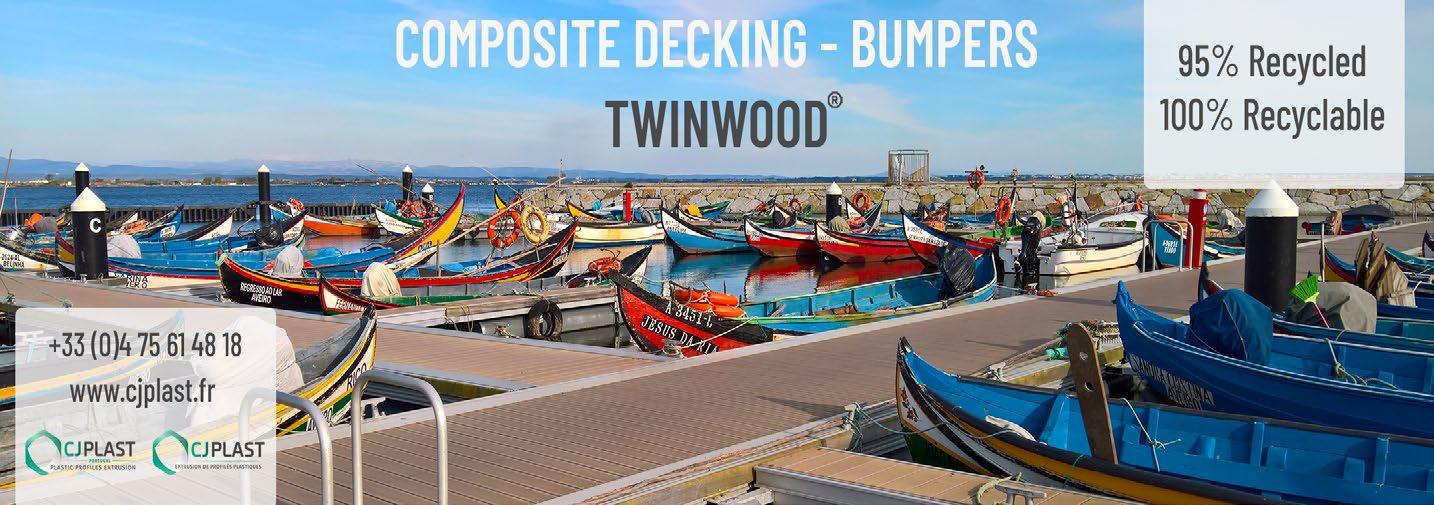

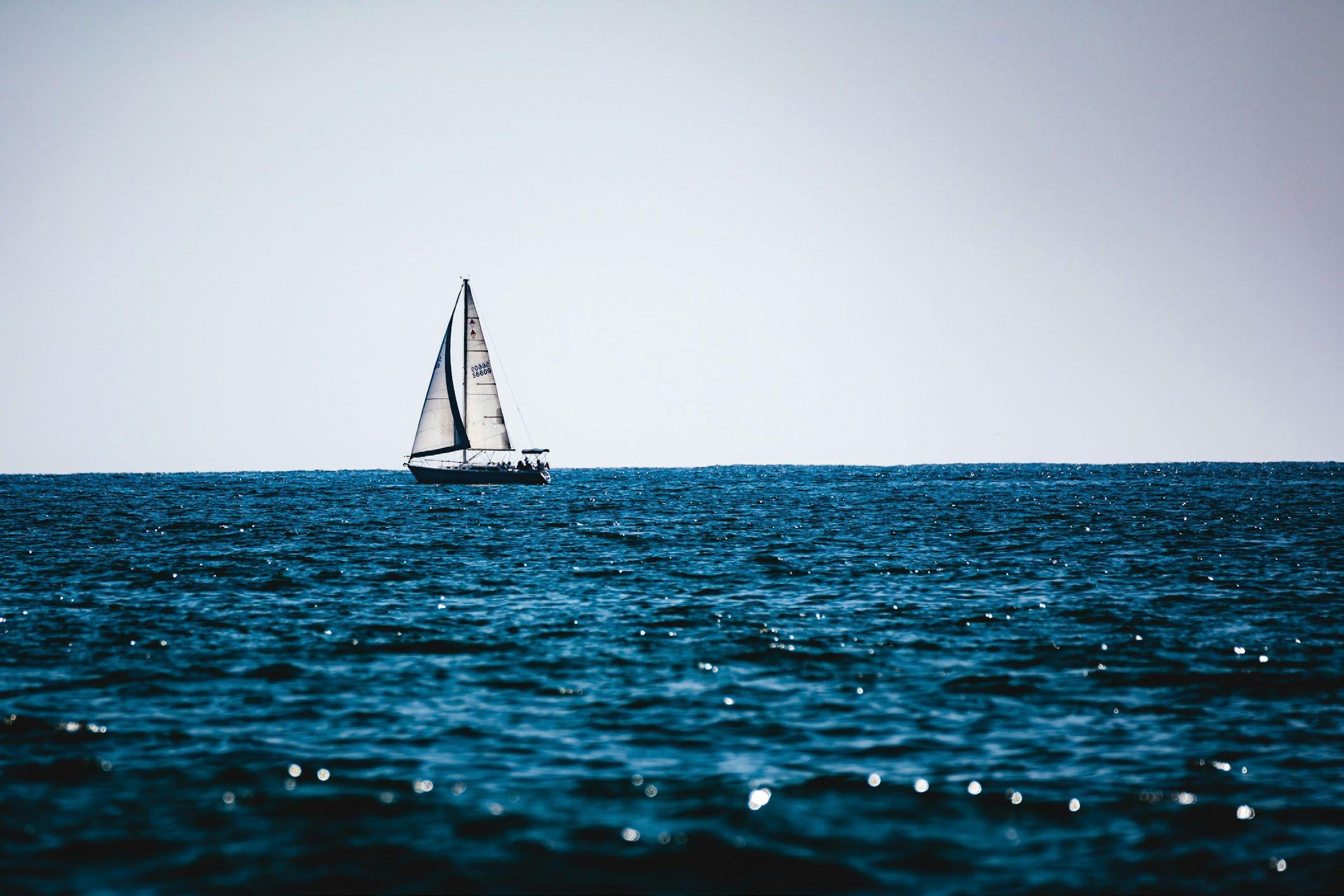


Luxury, exclusivity and all the trappings of wealth are ever-present in Mediterranean tourist ports, particularly in Italy, France and Spain due to their world leading positions in the superyacht industry. Although marinas in the Med share much in common, each country has its peculiarities and its areas of growth. Marina World looks into some of the latest regional developments.
By Donatella Zucca
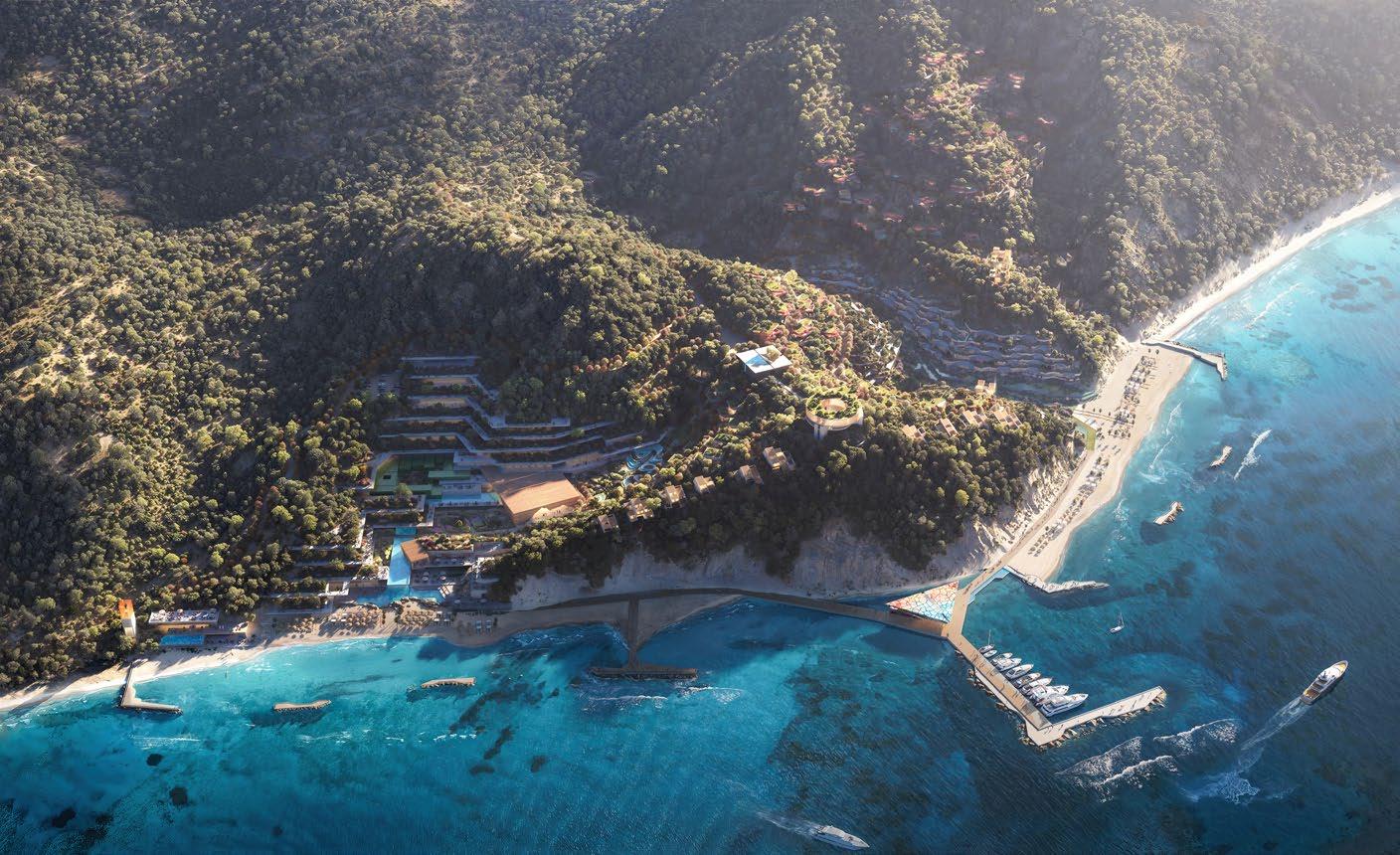
According to an Assomarinas report of its network marinas, carried out in September 2024, Italian prospects for 2025 are positive, with turnover likely to increase in every main area of the sector. This includes the big yacht market, which is driving a slight recovery for yachts under 24 metres which, until yesterday, were suffering.
The Italian picture is also influenced by the impact of almost double the number of imported US boats, and the fear shared by the rest of Europe of the repercussions of raised duties on industry costs and supplies. Alberto Glassi, CEO of Ferretti Group, confirms “there will be an effect.”
Throughout the entire Mediterranean, a wave of unforeseen events, uncertainties, forecasts and visions combine with the single certainty that large yachts, with their impact on both land and sea, require more space and better consideration. Sacred sites, such as Port Hercule in Monaco, Grand Harbour in Malta, Port Vell in Barcelona, Marina Genova in Genoa and, from 2026, D-Marin and Azimut-Benetti’s Porta a Mare in Livorno (Tuscany), and others, are busy implementing improvements or expansions.
Amidst this scenario, it is worth singling out the five projects being undertaken by Luca Dini Design & Architecture in Albania, which are putting the country on the high-flight circuit with regard to destination appeal and yachting facilities. The projects differ significantly from each other, incorporating influences from the past, alongside modern projections, and include tourist ports, towers, villas and luxury resorts. Some blend with natural surroundings while others are futuristic. The 30-storey Durres Tower, for example, is a self-sufficient ‘city’ unto itself with a green ‘lung’ that is spread out over several floors.
Atara Marina, which covers an area of 160,446 squaremetres, has eight berths for yachts up to 50 metres and is overlooked by crested hilltops that guard ancient ruins. Krorez Marina is significantly larger (678,788 squaremetres), with 231 berths up to 70 metres, and has been entirely designed to offer experiences that benefit wellbeing, in terms of physical health and lifestyle. The Life Marine Complex, with its 750 berths up to 70 metres, is located along the southern coast. The result is a project that encompasses two tourist ports, villages, hotels, shops, casinos and clubs that are immersed in coastal Mediterranean culture.
Back in Italy, Marina Olbia Yacht Service (MOYS) is building a new dock for superyachts in Marina di Olbia in Sardinia. This will be able to accommodate vessels up to 150 metres
and will have a mooring field with 14 buoys for boats of 25 to 55 metres in Baia Marinella. Marina di Olbia is favoured as an urban area with shipyards and offers all essentials for live-aboards even in the winter. The Costa Smeralda International Airport and terminal for private planes is three minutes away by car, and the city centre and ferry terminal just five and seven minutes away.
The marina is the largest supply base on the northern coast of Sardinia and has around 200 metres of dedicated dock space to serve seven vessels at a time. At Baia Marinella, buoys are protected from the prevailing winds for most of the summer months and located in front of Porto Rotondo and the Grand Hotel Abi d’Oru.
The Marina di Porto Rotondo Group, owner of Marina di Porto Rotondo is, meanwhile, progressing several plans. A leading operator in Sardinia’s marina network, the group owns Cala Bitta, Punta Marana and Portus Karalis. Each is to have increased moorings, adapted infrastructure to better fit new boat dimensions, and a new yacht club.
Portus Karalis, with 118 berths, is the only marina in southern Sardinia able to accommodate vessels above 90 metres in length. Its position in the port of Cagliari, a strategic port for cruising to France and Spain, makes it an ideal technical stopover. Like the other group marinas, its synergy with a shipyard gives it good reception facilities and storage services.



An exciting project is also in hand in Tuscany at the historic Marina di Punta Ala, where a radical €5060 million two-year redevelopment will significantly modernise the marina. In 2024, the water system and network connection facilities were replaced and infrastructure put in place for fibre optics. The existing breakwater has been extended and an additional attenuator is being built. Both will protect and increase its 885-berth space, all reconfigured to suit bigger vessels. Currently, the maximum size accepted is 28 metres but, when plans are complete, docks will be available for yachts of 30 to 60 metres. The shipyard is being redesigned and expanded with new haul and launch equipment for large yachts, and amenity improvements will include revamped gardens, pedestrian areas, a restaurant and area for fishing boats needing shelter from adverse weather conditions.
The superyacht marina sector is no stranger to big investments and impressive statistics, but recent results posted by Marina Genova (Liguria), better known as Marina Genova Aeroporto are mind-boggling. The marina ended 2024 with a turnover in excess of €15 million (+20% on 2023) and a berth occupancy rate of nigh on 100%. Over six million litres of fuel was supplied (+43% on 2023), 254 superyacht arrivals were logged, and 6,855 stopover days were recorded.
Since January, a 7,000m² photovoltaic system has been in operation and five high-power fuel pumps and an electric charge system (up to 320 kW/h) added.


“The biggest challenge we face regarding future technologies is Marina Genova’s entry into the distribution of next-generation clean energy fuels, of which hydrogen is the next bet.”
Giuseppe Pappalardo, CEO at Marina Genova for 20 years and an authority in the superyacht marina sector, speaks of new goals for the marina and the influence that wars and taxes could have on Italian and Mediterranean tourist ports:
“Our strategy has always been to invest in the future, anticipating the new needs of large yachts up to 130 metres,” he says. “The traffic generated by super and megayachts in 2024 confirms Marina Genova’s role as the hub for large and very large yachts throughout the year in the heart of the Mediterranean.”
“Our main goal is to continue to offer a lively superyacht marina village year-round, ensuring the well-being of all crew, thanks to the experience of our crew social manager, who can guide their free time in terms of outdoor activities, leisure, cultural trips and other things that make the crew feel at home, not alone, and well integrated into village life.
“The biggest challenge we face regarding future technologies is Marina Genova’s entry into the distribution of next-generation clean energy fuels, of which hydrogen is the next bet. We have a clear commitment to respect and protect the environment, with a special focus on the water, through interventions such as five Seabins to catch microplastics, and much more.
“On the renewable energy front, since our big photovoltaic system became operational in January, with 800 panels producing 500 MWh, we have saved over 270 tons of CO2, and helped the self-sufficiency of port activities. We are strongly committed to all these initiatives and, of course, we hope that the necessity for any kind of war, with or without weapons, ends as soon as possible. Our industry has already suffered enough, and we will suffer more from completely unjustified trade restrictions, as the cost increases, loss of purchasing power, and the slowdown and interruption of tourist flows, fundamentally affect our business.”














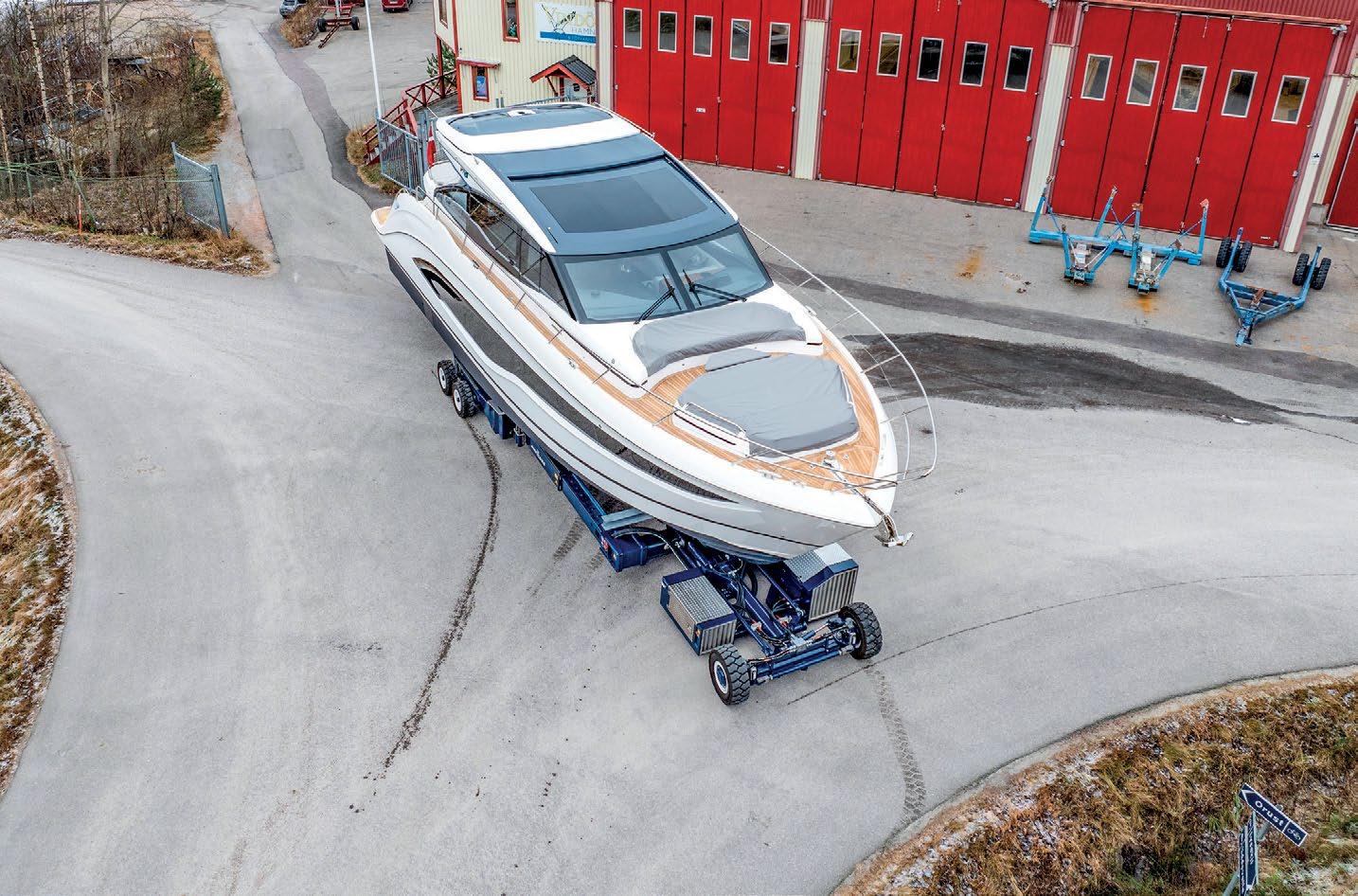





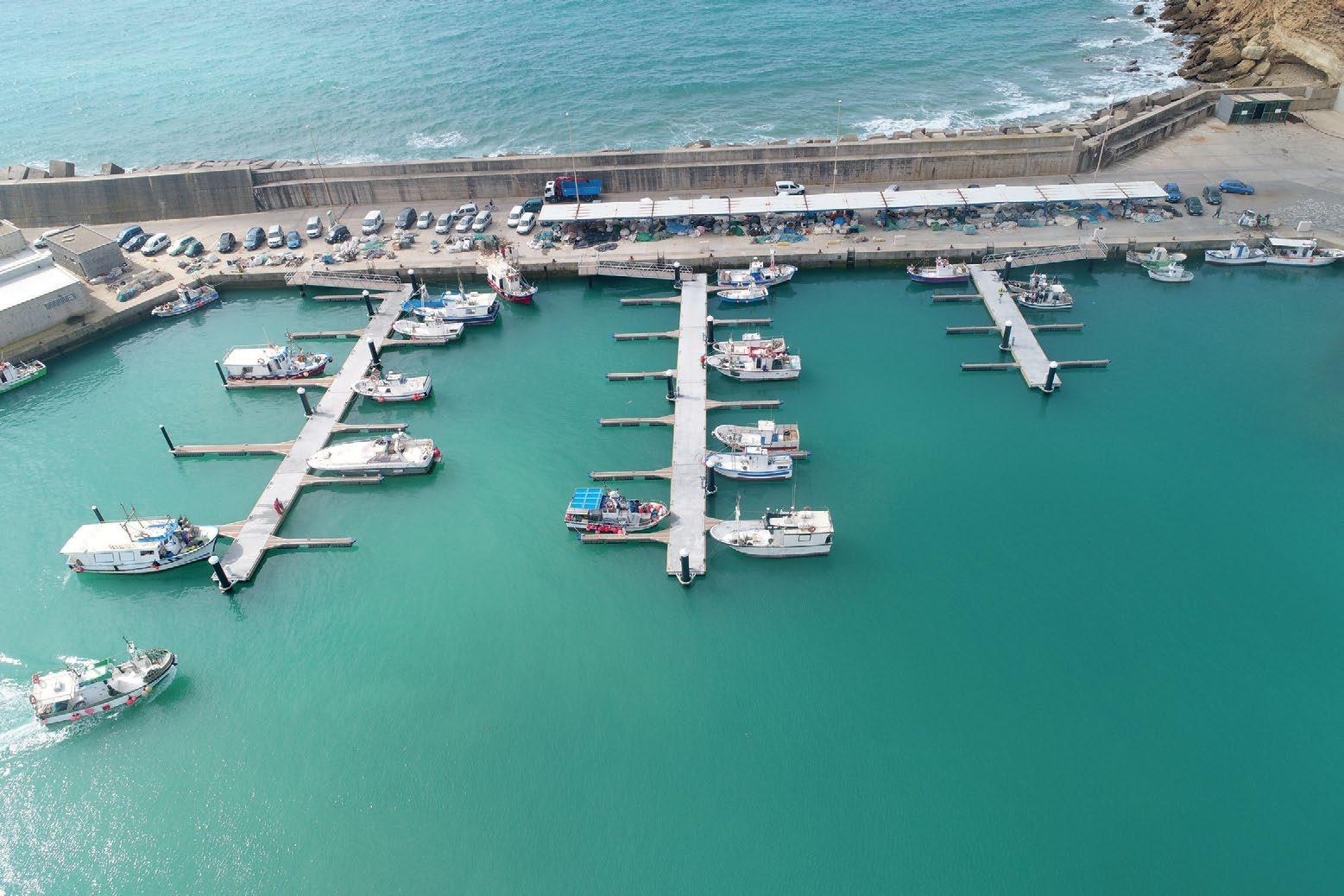

A pioneering new marina development is underway in Anguilla, one that promises to reshape the yachting landscape of the Eastern Caribbean. At the heart of this ambitious project is David Mizrahi, CEO of SF Investments and managing partner of the Port Nimara Marina development. Marina World sat down with David to get an insight into the project’s structure, progress and its significance for the region.
By Sophie Spicknell
Previous page: The proposed concept for the marina and its surrounding infrastructure, with residential and hospitality facilities surrounding the central marina.
Below and next spread:
Port Nimara is the first marina ever to be built in Anguilla and for Mizrahi, it’s a venture years in the making. “Together with SF Marina we started developing this idea several years ago when we cooperated in a development project in the Adriatic, where SF Marina was supplying the pontoons,” he explains. “That collaboration sparked a bigger idea which combined SF Marina’s technical expertise with investment and project development capabilities. And that’s how SF Investments and SF Marina Project Development came to life.”
Although SF Investments and SF Marina have common roots, the two companies operate with distinct but complementary roles. “SF Marina brings in all the knowhow in marina construction, design and operations,” says Mizrahi. “SF Investments contributes its expertise in investment management and project delivery, implementing an integrated vision, and enters into joint ventures with local partners who hold concessions or land suitable for marina and waterfront Real Estate developments. SF Marina then performs the marina design and construction.”
One such venture is Port Nimara, a fully funded, multiphase project that integrates a marina with real estate and hospitality elements. Developed in joint venture with TEI Inc., a New York based development group owned by Francis Greenburger, and Antillean Development LLC, an Anguillan-based developer under the lead of George A. Fraser, the project is designed to be a catalyst for sustainable growth. “The marina is already under construction,” confirms Mizrahi. “The first building components will include the Yacht Club, which will follow as part of the first real estate phase.”


“It’s about creating a place where people want to spend time, where there are restaurants, boutique shops, services and a real sense of community and lifestyle.”
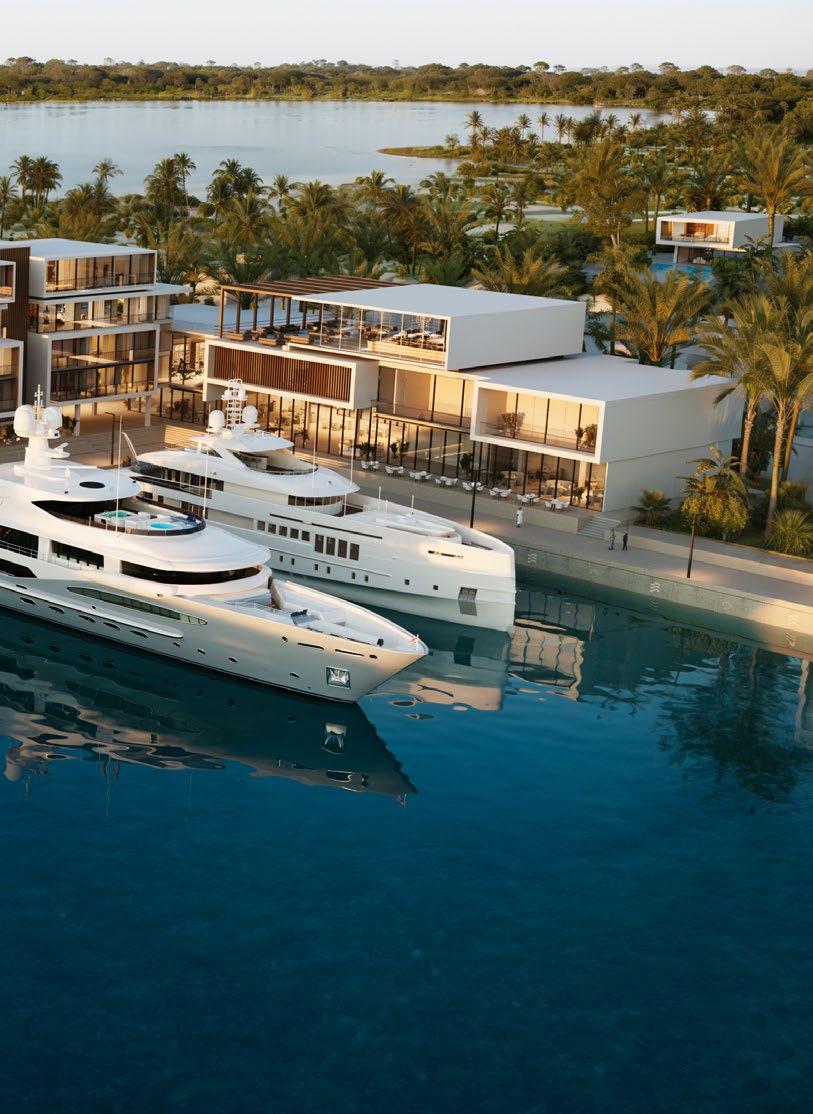
But this is no ordinary marina project. Mizrahi is clear that Port Nimara was conceived as an integrated lifestyle destination. “We don’t see the marina as a parking lot for yachts. Instead, it’s a core component of a vibrant coastal environment, adding value to the surrounding real estate and vice versa. It’s about creating a place where people want to spend time, where there are restaurants, boutique shops, services and a real sense of community and lifestyle.”
Set in the pristine waters of Anguilla, the project stands apart from typical regional offerings, both in design and legal structure. Port Nimara is one of the very few marinas in the Caribbean offering freehold ownership of berths. “You can actually purchase a berth and receive a title,” says Mizrahi. “It’s a significant differentiator, particularly attractive to yacht owners who want certainty and longterm value over their mooring options.”
Berths of up to 65 metres are being offered, including one berth designed for yachts up to 240 feet (73 metres).
Of the total 118 berths, not all will be available for sale, with smaller slips reserved for tenders. Mizrahi confirms that sales have begun, with considerable interest from buyers in the US, Europe and the wider Caribbean. “Some berths are already being reserved. It will be the first Marina in Anguilla and as such, it will be a catalysator for development and growth in the island.”
The strategic positioning of Port Nimara is also key to its appeal. “Right now, if you arrive in Anguilla on a superyacht, you have to moor offshore and tender in. There’s no berth,” he explains. “We’re changing that. And at the same time, Anguilla is a stone’s throw from St Martin, which has a strong technical marine industry base and St Barthélemy, the high-end party destination. Anguilla, by contrast, is known for its serenity, its barefoot luxury. It’s the ‘body and soul’ of the region.”


With this in mind, the Port Nimara masterplan includes not only the marina and hotel, but also beach villas and further residential developments to follow in later phases, with the first-phase completion expected around 2029. The project is being built by Consigli Construction, a fifth-generation US-based contractor with a strong track record in Caribbean resort construction. Mizrahi says regional subcontractors are also involved, guided by SF Marina’s technical oversight.
While the precise pricing of berths is confidential, Mizrahi confirms that the berths are priced competitively within the Caribbean market and come with options for rental management via the marina. “Owners can earn revenue by allowing the marina to rent their berth when they’re not using it. It’s a model that works well in other parts of the world, but it’s still rare here.”
Far from being a passive space, the marina is envisioned as a dynamic hub for marine activity. “We’re planning sailing races, sportfishing competitions and water sports events. It’s an active destination, not just a place to dock and disappear into your suite.”
An announcement regarding the marina’s future operations partner is expected in due course, although Mizrahi is not yet naming names. “We’re already running the operations planning, but we’re keeping that under wraps for now.”
“Our goal is to create a world-class maritime destination that respects Anguilla’s natural beauty, while propelling the island into a new era of economic opportunity.”


Asked about his long-term outlook for the project and whether there’s an eventual exit strategy in place, Mizrahi remains pragmatic. “As investors, we always consider long-term value creation and strategic partnerships. But for now, we’re focused on delivering a first-class product.”
According to the SF Group, Port Nimara is anticipated to generate 200 direct jobs and roughly 500 additional jobs in the hospitality, maritime, retail and support sectors. SF Marina will perform all design and construction for all marina parts and components. "Our goal is to create a
Below: Anguilla offers a uniquely unspoilt example of Caribbean natural beauty, and with an already active boating lifestyle, the new marina is set to bolster the existing sector while also bringing increased waterfront tourism to the island.
world-class maritime destination that respects Anguilla’s natural beauty while propelling the island into a new era of economic opportunity,” concluded Mizrahi.
Ultimately, Port Nimara represents something rare: a new superyacht-ready marina in a largely untapped luxury market, shaped by regional context and a visionary, integrated development approach. For Anguilla, it’s a milestone. For the yachting world, it’s a fresh destination on the Caribbean map, designed for those seeking more than just a place to dock.
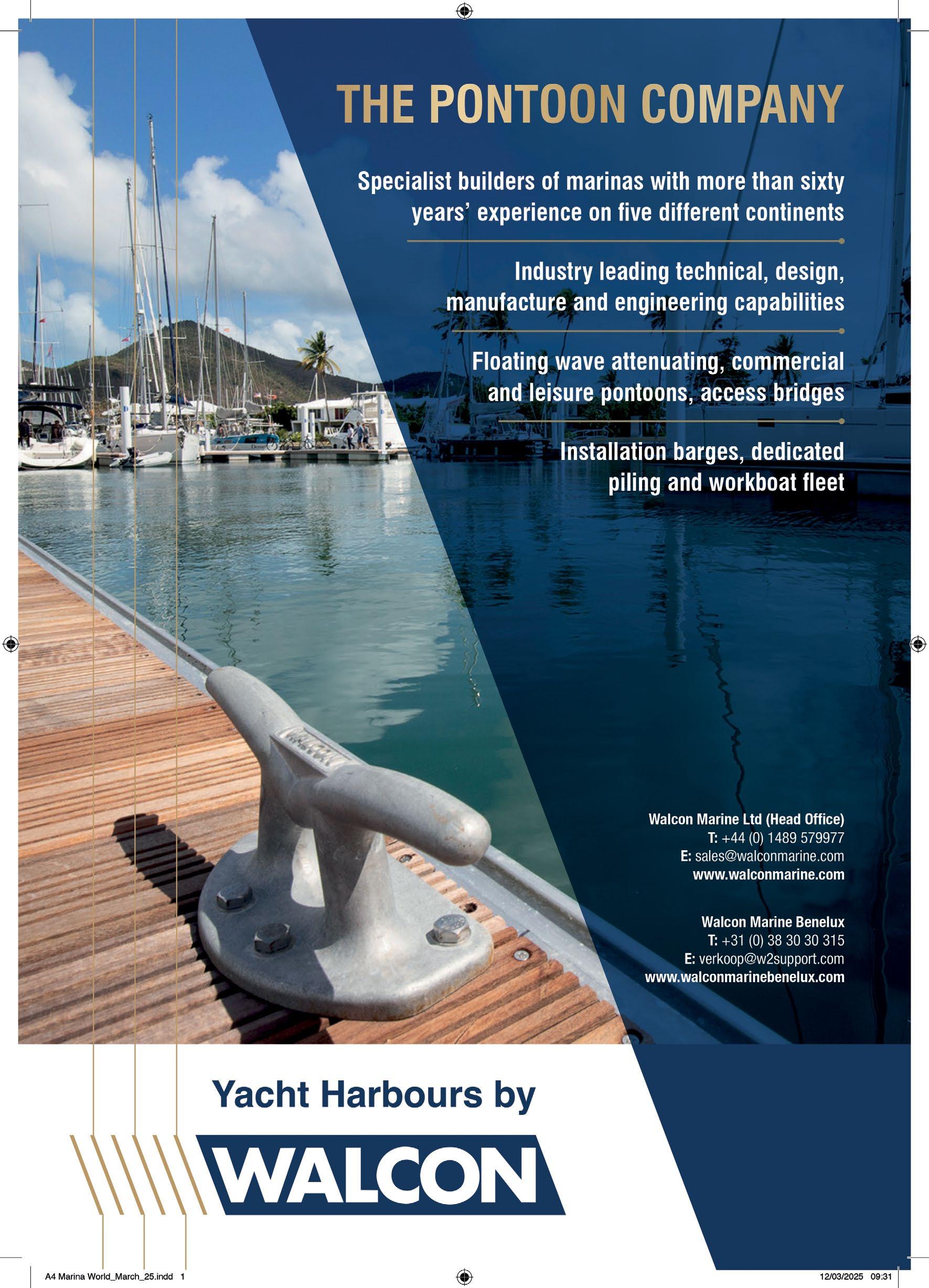

Andrew Chapman CMM, President of the Australiabased Marina Industries Association (MIA), has been appointed as a Member of the Order of Australia (AM) in the King’s Birthday Honours. The award is in recognition of his significant service to youth and to the marina industry.
Chapman has served as a director of the MIA since 2005, when it was a volunteer association without staff. His leadership and contributions have helped to create a thriving international industry body that supports and represents the interests of over 340 corporate members, including 291 marina and boatyard businesses which employ over 21,000 Australians.
Upon receiving the honour, he said: “I was very surprised and humbled by the news of the award but immensely proud of what I have been part of over the many years of my involvement in the industry and the MIA.”
Suzanne Davies MIA CEO commented: “Andrew's leadership, unwavering commitment, time and the gracious sharing of his knowledge over two decades has benefited so many professionals in our industry today and has directly resulted in the expanded reach and scope of the Association which benefits the entire industry. His contributions to our industry’s success should not be underestimated.”
Industry veteran Jeff d’Albora, who founded the industry association in the early 2000s and brought Chapman on in the early days to help, added: “During the past 20 years, Andrew has worked tirelessly as a director of the MIA and has strongly supported the development and advancement of education in the industry. It’s great to see his years of dedication have been recognised and rewarded.”
Chapman has held the offices of chairman and president of the MIA for the last 15 years. As is the case for all MIA directors, these roles are voluntary and completely self-funded.
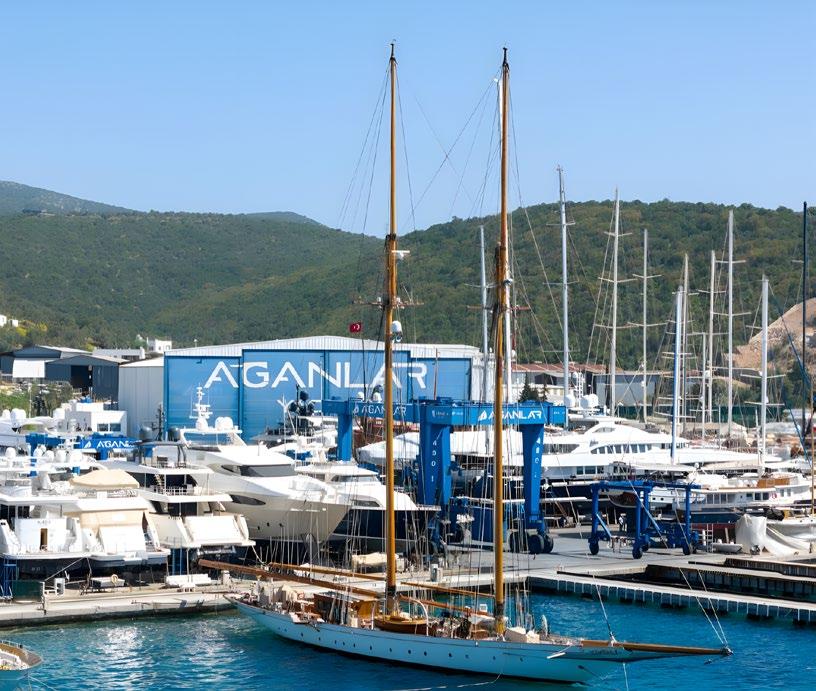
Aganlar Shipyard & Marina has appointed Can Polat as Marina Manager, marking a new phase for the facility. Polat brings decades of experience in yachting, chartering and marina management.

Founded in 1961, Aganlar offers refit services, technical maintenance and year-round berthing for superyachts up to 70-metre. The 47,000-square-metres marina accommodates 180 yachts and is equipped with travel lifts, repair hangars and support services.
Since relocating to Bodrum in 1996, Polat has held key roles at IC Çeşme Marina, D-Marin Didim Marina, Setur Gökova Ören and Kuşadası Marinas, as well as TUV Austria Marine. In 2013, he earned Certified Marina Manager (CMM) status from the British Marine Federation.
His appointment is expected to strengthen Aganlar’s operational focus and international presence, building on the shipyard’s long-standing reputation in the Eastern Mediterranean.
Steve Fisher, former Director of International Business for Rivergate Marina & Shipyard, won the 2025 Marine Industry Champion Award – the pinnacle of recognition across the entire Australian marine industry – at the 2025 Australian Marine Industry Awards in May.
Fisher was recognised for his 42 years of contribution to the Australian marine industry, at Rivergate and in his capacity with AIMEX-Superyacht Australia. In 2014, he won the Superyacht Industry Champion award.
Fisher, who worked tirelessly for Rivergate for 18 years in the roles of General Manager and Director of International Business, and attended international yacht shows and industry events on Rivergate’s behalf throughout his tenure, was taken aback by the award, which he accepted to a standing ovation. His acceptance speech brought the audience to tears of laughter as he told tales about retirement and shared memories of his career in yachting.

Judy Brinsmead, owner of Rivergate Marina & Shipyard, said Fisher’s recognition was exceedingly well-earned. “The standing ovation from his colleagues says it all. His contribution to the marine industry in Australia and indeed internationally has been immense.
“Steve’s warmth, skill, and knowledge, together with his advocacy for the industry, have been pivotal to the establishment and growth of the superyacht industry in Australia.”
AIMEX-Superyacht Australia CEO, David Good, also paid tribute saying: “This is a lifetime achievement award because Steve has dedicated his career and his life to the marine industry in all its facets. This is just recognition for all the things he’s done above and beyond his job descriptions.
“Steve has spent more time than anybody criss-crossing the world to convince international captains to bring their vessels to Australia, which in turn generates thousands of jobs for tradespeople and service providers.”
The Saudi Red Sea Authority (SRSA) has signed a Memorandum of Understanding with shipbuilding group Fincantieri to support marina infrastructure and coastal tourism development in Saudi Arabia.

Module Solutions & Systems AS (MSS) of Norway has become a new European distributor for US company Strongwell, a leading provider of FRP composite solutions. The distribution agreement marks a strategic step in expanding Strongwell’s international footprint across Europe and beyond.
Signed on 23 May 2025 by SRSA CEO Mohammed AlNasser and Fincantieri CEO Pierroberto Folgiero, the agreement focuses on sustainable marina development, maritime safety and innovation. The agreement also supports SRSA’s mandate to regulate and enhance coastal tourism while protecting marine ecosystems and aligning operations with international standards.
Fincantieri will contribute expertise in maritime engineering and technology. The partnership includes joint efforts in research and infrastructure improvements.
Separately, SRSA has issued its first marina operator licences. As of 15 May 2024, three licences were granted, including for Al-Ahlam Marina in Jeddah and Jazan, and Red Sea Marina in Jeddah. The move supports SRSA’s goal to establish procedures, improve service quality and promote environmental preservation in marinas.
Under the terms of the agreement, MSS is authorised to distribute Strongwell’s products in Europe, excluding the United Kingdom (UK). MSS will serve customers using product warehoused and shipped locally, as well as the potential for factory-direct shipments.
MSS will distribute both standard and non-standard FRP products from Strongwell, including Phenolic SAFRAIL fibreglass industrial handrail systems and DURAGRID and DURAGRID Phenolic custom fibreglass gratings used for marina docks and gangways.
“We are excited to have MSS as our European distribution partner,” said David Gibbs, Strongwell’s Vice President of Sales and Engineering. “Their experience and presence in the region will allow us to better serve international customers with Strongwell’s high-performance, American-made composite products.”
The 2025 Nautilus Marine Insurance Marina of the Year Awards at Sydney’s Middle Harbour Skiff Club welcomed over 110 guests from Australia, New Zealand, Thailand, the UAE and Singapore.
The event introduced two new individual categories. Marine Structures’ Jacob Morris received the Emerging Talent Award, while Stephanie Trounce of Gold Coast City Marina & Shipyard (GCCM) was named Industry Woman of the Year.
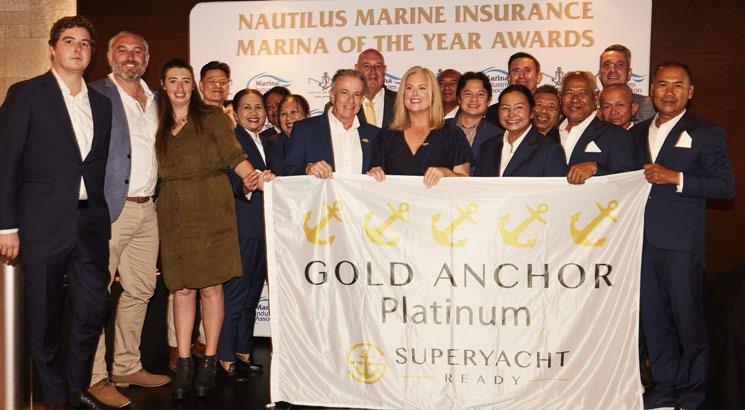
Jones Bay Superyacht Marina in Sydney was named Best Commercial Marina under 140 boats. Dubai Harbour Marina received the International Marina of the Year award, with Westhaven Marina in Auckland Highly Commended.
GCCM received Best Commercial Marina over 140 boats, Boatyard of the Year over 20 boats and Dry Stack Storage Facility Award. The Boathouse Marina was Highly Commended in the Dry Stack category.
White Bay 6 Marine Park won Boatyard of the Year under 20 boats. Royal Queensland Yacht Squadron claimed Club of the Year, with Sandringham Yacht Club Highly Commended. Bellingham Marine received the Industry Innovation of the Year Award. Royal Phuket Marina earned the MIA Environmental Award.
ONE°15 Marina Sentosa Cove and Sydney Harbour Boat Storage were both inducted into the Hall of Fame. Ocean Marina Jomtien received a special accreditation presentation. Birkenhead Point Marina, Coral Sea Marina Resort and Sanctuary Cove Marina were also commended.

Over 80% of the exhibition space is already sold out for next year’s Marinas26 conference and exhibition – 25th26th May at the Royal Pines Resort on the Gold Coast, Australia. The event looks set to exceed the record of 384 delegates welcomed at Marinas24, held in Brisbane.
The Marina Industries Association (MIA), organiser of the event, is currently working on a conference programme that ensures the industry receives informative and educational briefings, facilitates a sharing of ideas and best practice, including international perspectives, and provides opportunities for industry to discuss current issues, challenges and opportunities. Structured networking sessions, a welcome reception and gala dinner form a core part of the programme and an optional study tour of some of the new Gold Coast marina facilities is on offer.
The dates for Marinas26 have been selected to enable delegates to arrive ahead of time for a weekend visit to the Sanctuary Cove International Boat Show.
The Hong Kong Government is inviting expressions of interest (EOIs) for a luxury resort and marina development at the exLamma Quarry site. Proposals are due by 2 July 2025.
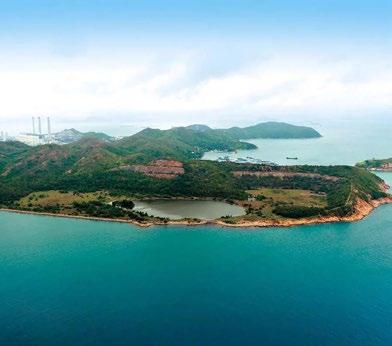
Plans include a 150 to 200-berth marina for yachts up to 50-metres in length, a five-hectare man-made lake and low-density residential areas.
The 25-hectare site on Sok Kwu Wan’s northern coast is part of a broader island tourism strategy outlined in the 2024 Policy Address. EOIs have also been launched for projects in South Lantau, Pak Nai and Tsim Bei Tsui.
The Development Bureau proposes a singledeveloper model for greater design cohesion and infrastructure efficiency. A full environmental assessment is required before construction.
Currently leased for environmental education, the site is under a planning study to assess land use and connectivity with nearby attractions. Three EOI briefing sessions will be held on 14 April 2025.
The Monaco Smart & Sustainable Marina Rendezvous returns to the Yacht Club de Monaco on 21-22 September 2025 for its fifth edition. The event promotes collaboration on sustainable marina and coastal development, aligned with smart city strategies.
Three key awards headline the year’s programme: the Marina Award, which recognises excellence in sustainability, innovation and user experience; the Innovation Award, which supports startup-led solutions in areas like energy, waste and digital systems; and the Architecture Award, part of the “Echoes of Venice” competition, which explores resilient hospitality design for the Venetian Lagoon.
A new initiative, SMART DOCK, will bring together industry players to develop intelligent, sustainable pontoon systems.
Running alongside the United Nations Ocean Conference goals, the event encourages dialogue among public and private sectors to reinforce marinas’ role in adaptive coastal systems. The 2025 Rendezvous continues to define standards for the future of marina infrastructure.


Marine Travelift has launched Marine TraveliftFlorida, a factory-owned branch aimed at enhancing support for the state’s marina operators and waterfront facilities.
With nearly 300 units already in operation across Florida, the move brings localised sales, service and technical support backed by the company’s Wisconsin headquarters.
Marine Travelift-Florida takes over responsibilities previously handled by WE Johnson Equipment, following the retirement of owner Gary Work after 33 years. Mike Marchese leads sales for the new branch, alongside Gulf Coast specialist Leo Piloto and a team of seasoned technicians.
The expansion builds on the company’s 2019 midAtlantic launch and reflects its commitment to providing consistent service across key markets. By maintaining a skilled local presence, Marine Travelift aims to streamline maintenance schedules and improve equipment performance statewide.
Savannah Yacht Club, Belle Bluff Island Marina, Safe Harbor Bahia Bleu, and Hinckley Yacht Services have achieved Clean Marina certification, recognising the marinas’ compliance with best practices that minimise pollution and protect Georgia’s waterways.
The programme promotes responsible marina operations through measures such as proper waste management, stormwater control and the reduction of nonpoint source pollution. The certification reflects a coordinated effort led by the Georgia Coastal Resources Division and UGA Marine Extension.
Each marina offers a range of services: Savannah Yacht Club combines recreational amenities with strong operational oversight; Belle Bluff Island Marina provides storage, fishing docks and facilities for vessels up to 21-metre; Safe Harbor Bahia Bleu features transient slips for yachts up to 30-metre in length, dry storage and valet services; and Hinckley Yacht Services offers technical repair services, heated storage and guest amenities.
The certifications underline the role of Georgia’s marinas in promoting sustainable boating practices along the coast.


The ICOMIA World Marinas Conference will take place from 1517 October at Venezia Certosa Marina in Venice, Italy. Organised in collaboration with the Municipality of Venice, the Venice Port Authority, Venice International Airport (SAVE), Assomarinas, Confindustria Nautica, and Confindustria Veneto Est, the event will focus on the theme Innovation, Collaboration, Transformation.
Dr Roberto Perocchio, President of Assomarinas, described the event as “three truly intense days with speakers who cover the entire globe from Brazil to China to Australia.” He confirmed participation from major marina groups such as D-Marin, IGY, P&O Marinas and F3, along with top infrastructure and digital service providers.
Speaking at the Venice Boat Show, Alberto Sonino, CEO of Venezia Certosa Marina, highlighted the significance of hosting the event in a city with such rich maritime heritage, amidst evolving global marina dynamics.
The programme includes panels and guided marina tours, addressing topics from alternative fuels and digital transitions to disaster prevention and regulatory changes. It will also explore charter–marina synergies, manufacturer expectations, and the economic impact of tourist ports.
Joe Lynch, CEO of ICOMIA, said: “The ICOMIA World Marinas Conference is the ideal opportunity for marina professionals to meet and discuss topics that are directly relevant to them. Next year’s conference in Venice will explore ways to drive innovation across the sector and transform the way we work in ways that are beneficial to all. We look forward to welcoming you there.”
Advertisement
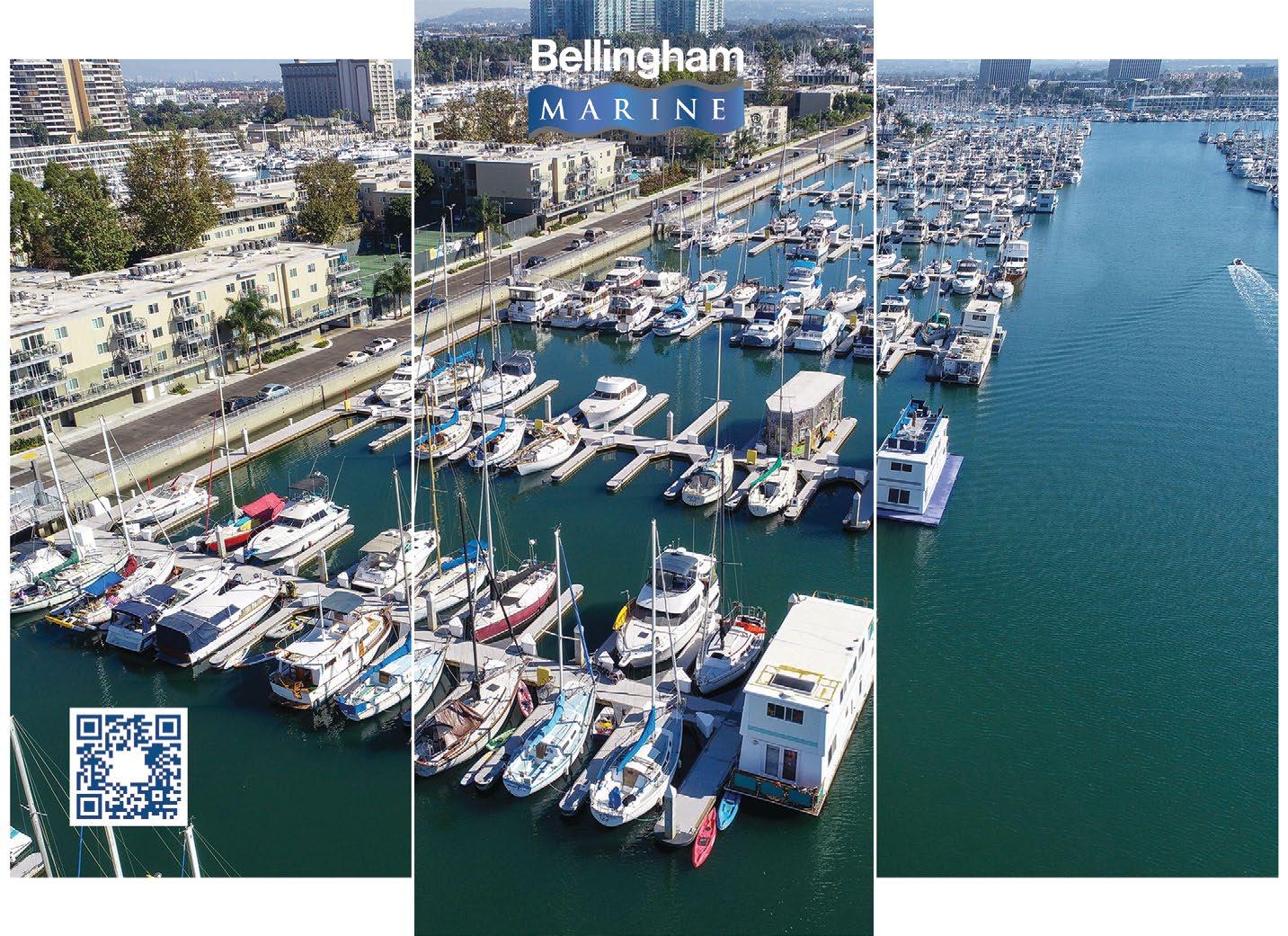

15-17 October 2025

SHOWCASE YOUR BRAND AT THE CONFERENCE! BECOME A SPONSOR
REGISTER AS DELEGATE TO PARTICIPATE THE FULL CONFERENCE

Since 1993, the ICOMIA World Marinas Conference has been the premier international gathering for marina professionals. Overseen by the ICOMIA Marinas Group, the conference












attracts a diverse audience, including marina owners and operators, developers, technical experts, manufacturers, startups, media, and fleet owners.







Set to host the inaugural African Boating Conference, while steering the Global Marine Business Advisors (GMBA) association and recently stepping in as Interim Executive Director of the International Federation of Boat Show Organisers (IFBSO), Veda Pretorius is making waves across the global boating industry. Marina World sits down with Pretorius to explore her vision for Superyacht Cape Town.
By Mel Symes
Veda is based in Cape Town, South Africa, a strategic maritime station straddling the division between the Atlantic Ocean and the Indian Ocean. She is the Founder and Director of Superyacht Cape Town, a collaborative and comprehensive portal offering visitor information, and facilitating access to local superyacht services, suppliers and marinas. Through close collaboration with the City of Cape Town, the V&A Waterfront, and the South African Boatbuilders Export Council, Veda actively promotes Cape Town as a superyacht destination.
The V&A Waterfront is one of the most visited and popular destinations in Africa. A mixed-use precinct anchored around its marina, the evolving industry means that a superyacht might today find itself berthed next to a commercial tug. As a key source of income for the marina and local community and an aesthetic attraction for tourists, however, efforts are currently underway to boost and refine superyacht activity, with a self-funded development project featuring a new hotel and dedicated superyacht quayside infrastructure and services.
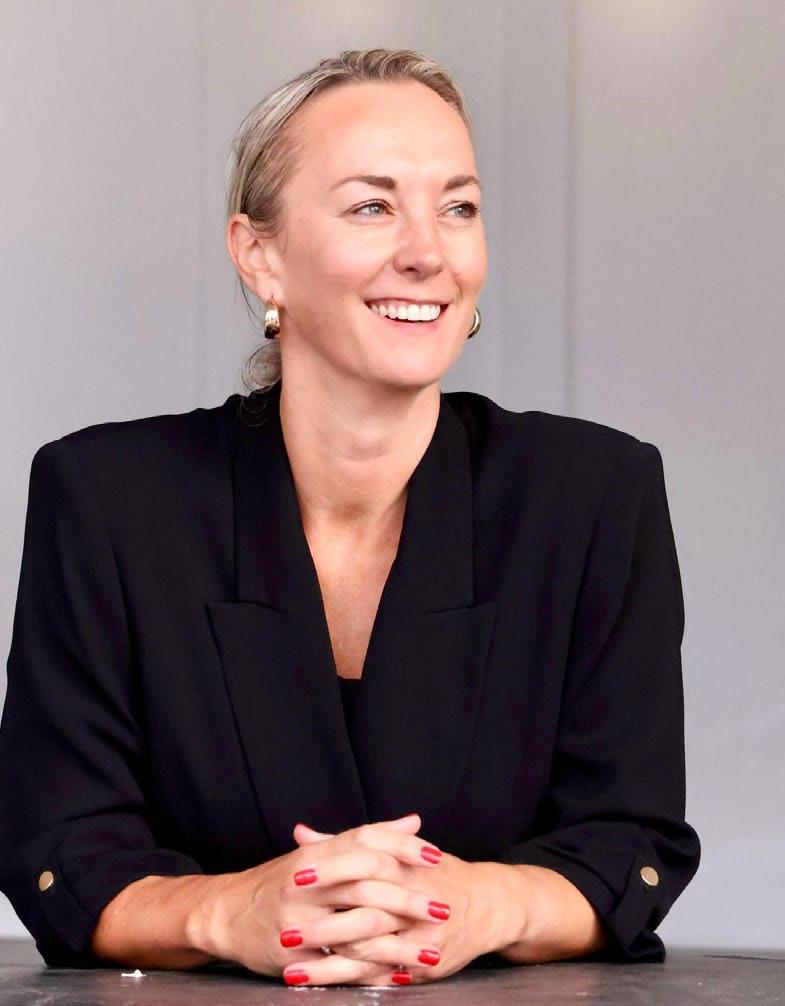
This interest in expanding yachting infrastructure is echoed in recently announced opportunities to develop two local harbours – Saldanha and St. Helena. “This is exciting news,” comments Veda, “since invitations for the private sector to bid for development tenders in this sector haven’t been forthcoming in decades.” Testament to its interest in attracting investment, Invest SA, South Africa’s government investment promotion agency established less than 10 years ago, serves as a main driver for attracting, facilitating and supporting potential investors.





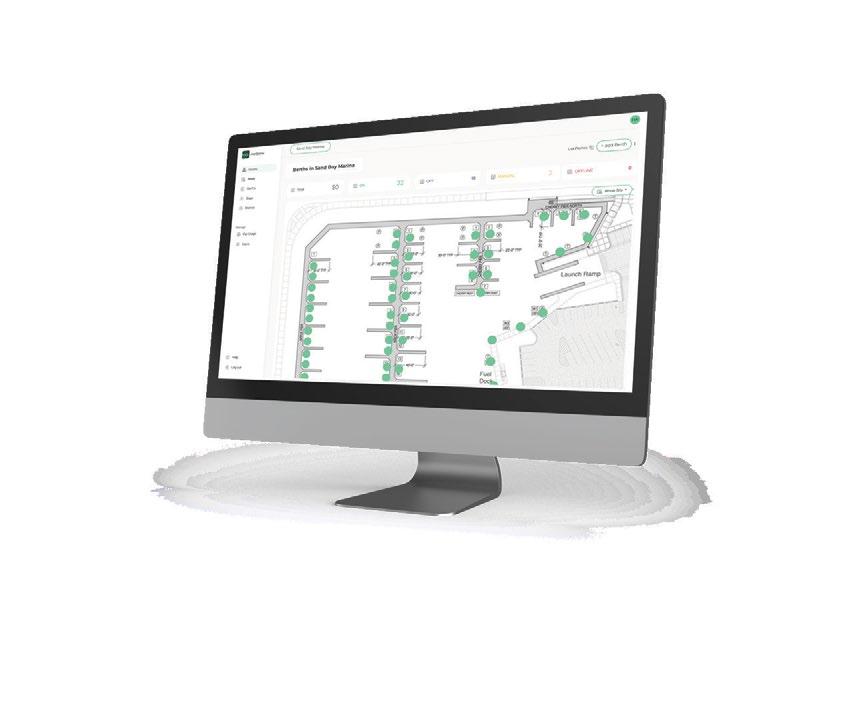
“With the weak rand and government incentives for foreign investment for infrastructure development, we want to communicate these market growth opportunities to a wider public.”
The first African Boating Conference
“This is certainly one of our objectives within the African Boating Conference,” explains Veda. “There is a real issue with access to coastal waters, with short term leases for many yacht clubs and consequent lack of investment, coupled with poorly maintained government infrastructure. With the weak rand and government incentives for foreign investment for infrastructure development, we want to communicate these market growth opportunities to a wider public.”
“One of the primary topics to be explored at the Conference is, of course, marinas,” she says. “I’ve spent many years of my working life overlooking the marina at the V&A Waterfront. It’s been one of my missions to convey the importance of a warm and authentic welcome to visiting yachts. Marinas can fulfil many roles, but when boats are people’s homes, much of their socialising takes place around the pontoons and marina hospitality sites.
The marina then needs to ensure a convivial and inviting atmosphere, conveying the unique qualities of the local culture, be it gastronomy, local heritage or a gateway to exploring the wider hinterland.”
“One of our keynote speakers is Paul Darrouzet, owner of Coral Sea Marina, whose work has transformed the marina into an award-winning facility with a long waiting list. We’ll also have a panel discussion on marina development in Africa to help frame the development prospects and potential, and hear from the experts on the challenges and opportunities for developers.”

“The African Boating Conference draws inspiration from established models like the Singapore Yachting Conference and the Australian Superyacht Conference (ASMEX). Our initial vision was focused on developing a superyacht route across this region, but we recognised that the superyacht sector significantly overlaps with the boatbuilding industry regarding suppliers and customers. Individually, our separate boating sectors – marinas, boatbuilding, and superyachts – aren’t substantial enough to support standalone conferences. Consequently, we’ve opted for a unified approach, which creates a valuable networking platform while showcasing the exciting opportunities that South Africa offers for superyachts, the broader recreational boating industry, and its supporting infrastructure.
“I believe that we can learn from other sectors. The luxury travel sector, for example, is increasingly employing sophisticated sensory and immersive innovations to captivate potential customers and drive sales.”


It might seem reductive that the example of a successful female entrepreneur and business leader drives the urge to refer to successful role models, and a simplification of a complex journey, but Veda recognises the impact of notable women in her personal and working life. She is a fervent believer in lifelong learning and reflects on the achievements of her grandmother, after whom she was named, who after no less than her seventh child, studied drama at degree level, later taking up programming in her sixties, leading to university employment as a coder and programmer in her seventies.
She recognises the accomplishments of various women in the South African boating industry, such as Toni Mainprize who as General Manager, turned around the fate and fortunes of the Royal Cape Town Yacht Club; Vanessa Davidson, executive director of Blue Cape who was fundamental in setting up the local Boatbuilding Academy amongst other projects, and has positive words for Damen Shipyard Cape Town who have been very proactive in terms of promoting gender equality and training for women in the marine industry.
She recollects trying to return to the workplace after a seven-year hiatus supporting various NGOs from home while raising three children. “People have no idea how difficult it is to get back to work after you’ve take time off to look after kids – even if you are prepared to pay for full-time childcare and work eight to nine hours a day. There seems to be an inherent belief that all your work experience and expertise has simply vanished, obliging you to start again from scratch. I’m sincerely grateful to the late Jouko Huju for opening the door, unfolding the steps, and providing access to opportunities to get my career back on track.”
“Jouko was a natural collaborator and coordinator, always knowing who was doing what with remarkable diplomacy. He would have been a great Ambassador, being fundamentally focused on uniting people. He saw the immense value of GMBA, stemming from his deep appreciation for ICOMIA’s capacity to bring the industry together. Gathering international industry leaders together around a table, he passionately believed that the collective value of collaboration would always outweigh the potential for competition or conflicts of interest. He was a profound source of inspiration.”



Veda has also stepped into Jouko’s role as leader of the International Federation of Boat Show Organisers, who met with their ICOMIA counterparts at Congress in May. “It’s tremendously exciting to be part of the group; I absolutely love it,” she enthuses. “It’s a very dynamic and interesting group of individuals, so I’m learning a lot.”
Regarding trends and developments, she predicts more change on the horizon: “After the recent post-COVID turbulence, we’re about to see another major shift based on uncertainties related to trade relations, tariffs, supply chain challenges, and regional conflicts. All of this impacts consumer confidence which, in turn, affects boat shows. We’re already seeing consolidation happening in the Scandinavian region where some shows have been cancelled in response to a cautious industry and public, but conversely, there’s a proliferation of shows in
Europe and the Med. It will be interesting to see some of the insights drawn from our recent industry survey.”
The IFBSO Boat Show Barometer, launched in early April, comprises two separate but equally important surveys aimed at IFBSO members (boat show organisers) and exhibitors. The insights from the surveys will be shared during the upcoming IFBSO Congress.
“I believe that we can learn from other sectors. The luxury travel sector, for example, is increasingly employing sophisticated sensory and immersive innovations to captivate potential customers and drive sales. From the use of multi-sensory tech to emotive and compelling storytelling, they achieve another level of engagement. We really need to innovate to attract both a younger demographic and more diverse newcomers to boating.”
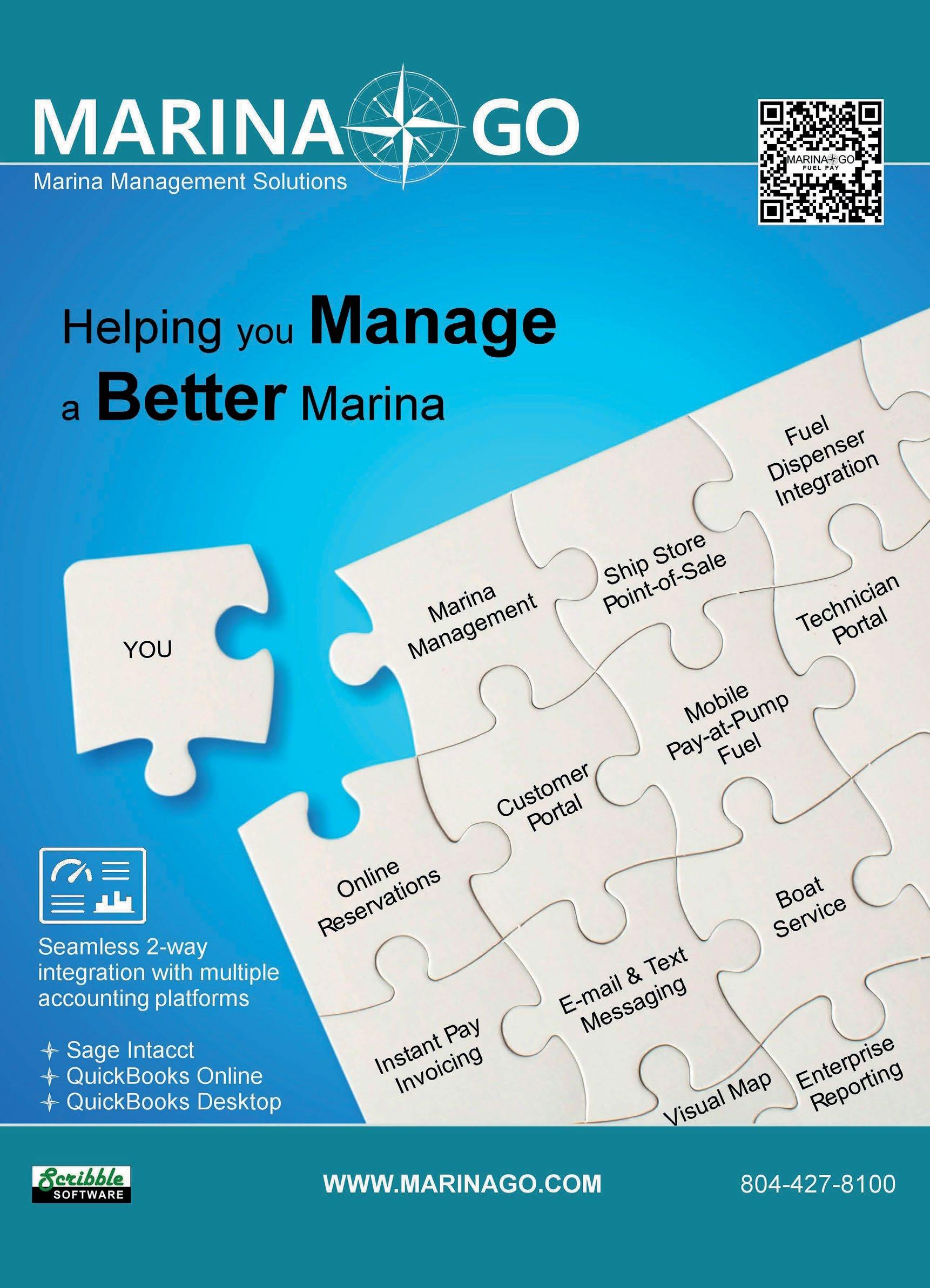

As every industry evolves to meet the demands of a fast-paced and everchanging world, the superyacht sector emerges as the embodiment of rapid transformation and expansion. In less than ten years, the superyacht sector of the marine industry has exploded, we take a look at some of facilities built to meet these yacht’s unique demands.
By Chelsea McNeilly
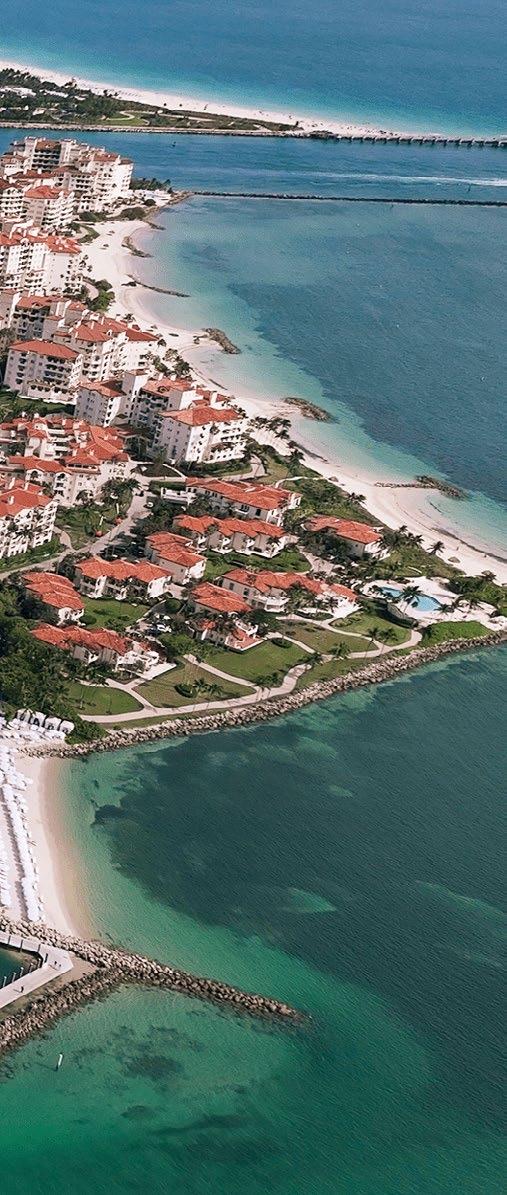
Around the world, superyachts are growing significantly in size and volume, driving increased demand for luxury-level amenities and services at marinas. As the industry continues to evolve and marinas transition from simple docking spaces into full-service destinations, the infrastructure in size and volume grows with it. The framework required to accommodate yachts up to 120 metres/400 feet in length has some foundational design considerations that are an integral component of having a future-ready superyacht facility.
The structural design of the marina system itself is the most important part of constructing a marina that can accommodate superyachts. A wide dock system, from 12 to 20 feet wide at minimum, allows safe passage of foot traffic and provision vehicles. Also paramount to the design is the freeboard level, which helps accommodate variable boarding heights. Superyacht facilities are generally designed to accommodate vessels with a freeboard – the vertical distance between the waterline and the deck –typically ranging from 30 to 36 inches, ensuring convenient and safe access for passengers and crew.
Constructing a stable and robust marina is essential to ensure the long-term performance of a facility of this size built in demanding marine environments. Strong wind and wave loads put pressure on the structure, especially in locations prone to hurricanes like the Caribbean or the southeastern USA. The dock system should also be built to withstand the approach angle and velocity of the vessel impact during mooring. Beyond the environment, the crews, guests, equipment and provisioning services, and other necessary personnel require a sound and strong system.
A thoughtfully designed and structurally resilient dock not only safeguards pedestrians but also maintains reliable functionality under diverse and challenging conditions.
Accommodating the immense size and weight of large vessels requires a design with upgraded hardware standards. Given that these yachts can weigh thousands of tons, the system must include oversized cleats and bollards secured with high-capacity hardware as a minimum requirement. Using movable cleats would pose a significant safety risk, as the force exerted by the vessel could tear them off, potentially leading to hazardous situations.
Below: Designed as a resort-style facility, Safe Harbor Rybovich in West Palm Beach, Florida has unobstructed deep water access from the Atlantic Ocean and various on-site amenities.
Facing from top: Jones Bay Superyacht Marina in New South Wales, Australia is a magnet for vessels up to 90m long.
Below: A thoughtfully designed and structurally robust dock system, as at Marina di Loano in Liguria, Italy ensures the safety of pedestrians as well the functionality of space.

By virtue of their complex systems, superyachts require a well-designed utility infrastructure. To power vessels equipped with HVAC, lighting, various computer systems, and advanced navigation equipment, highcapacity electrical service should be built into the marina design. To promote efficient energy use and ensure fair billing, metering systems are needed for accurate usage monitoring. Water systems should be in place that not only have high pressure capabilities, but also an integrated filtration, treatment and pump-out system. Black water pump-out systems should have sufficient capacity for rapid removal speeds and have easily accessible connections at each berth to improve environmental compliance.
Additionally, plumbing lines must be protected from extreme conditions, particularly the heat generated by
engines and exhaust systems. Proper insulation and thoughtful routing are critical, especially since many lines are installed near the waterline where they are more vulnerable. Meeting the high standards of superyacht operations requires a combination of reliability, efficiency and safety.
Fire suppression and safety systems on superyacht marinas are designed to comply with both local and international fire codes for high safety standards and risk mitigation. Fire safety essentials, such as adequate water pressure for fire-fighting hoses, Aqueous Film Forming Foam (AFFF) for effective fire suppression, and strategically placed fire extinguishers and carts are key components of a cohesive fire-fighting system. These features enable a quick and effective response to a fire, protecting personnel on board, minimising property damage and de-escalating potentially hazardous situations.
Operational efficiency within the marina enhances the safety of crew, vendors and guests. Smart marina systems built into the design of the facility enable real-time electrical monitoring, water usage tracking and automated safety features. These elements can allow for things like proactive maintenance and resource management. Marina operators and staff can also rapidly address problems or potential issues that may arise. Including a system that seamlessly integrates into yacht management systems and marina operations dashboards supports the successful performance of such large facilities.
As important as operational efficiency are the security and privacy protocols built into the marina. Systems built into the framework of the marina can include surveillance equipment, access control, and smart fencing and gates. These measures should be carefully balanced to respect the privacy of yacht owners and visitors, creating a secure, yet unobtrusive, atmosphere.
Undergoing significant global expansion, the superyacht industry is necessitating the need for sophisticated and robust marina infrastructure. No longer just a slip for boats, these facilities are quickly transforming into fullservice luxury destinations. Laying out the framework for these facilities is foundational in the design stage and sets the marina for success.
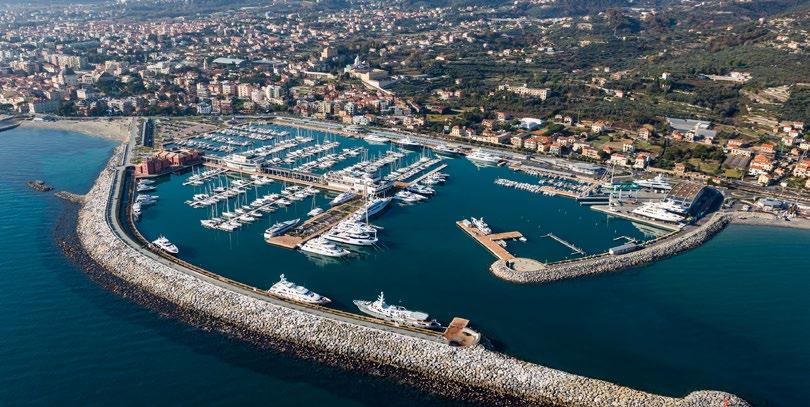

From the strength and size of the docks to the inner utilities, to the exterior amenities that create a safe, comfortable and pleasant experience for crews, owners and guests, every part of the system is a critical performer for these large-scale marinas. Input from captains, crews and marina managers plays a vital role in capturing the needs and design elements of those who use these facilities.
The future of the superyacht industry shows continued growth in size and facility requirements. Working with experienced consultants and marina contractors involves intricate planning for every detail of the design from the ground up. Infrastructure will continue to grow, and incorporating environmentally responsible technologies and acting on continuous feedback from users will innovate how these are planned. By building with the future in mind, current and future generations of superyacht owners will continue to enjoy exceptional service for years to come.


After 55 years in maritime construction, the latter 35 of which were focused on marina development, Tony Mair of Orakei Marina Development Ltd (formerly Mair & Associates) has retired. A lifetime member of the Institute of Professional Engineers of New Zealand and a lifelong boater, Mair leaves his signature on a wide range of marinas in his native New Zealand, elsewhere in Asia Pacific, and beyond. He has been directly involved in the marketing and sale of over 6,000 berths and no fewer than 16 marina projects. Marina World talks to him about his extraordinary contribution to the marina industry.
By Carol Fulford

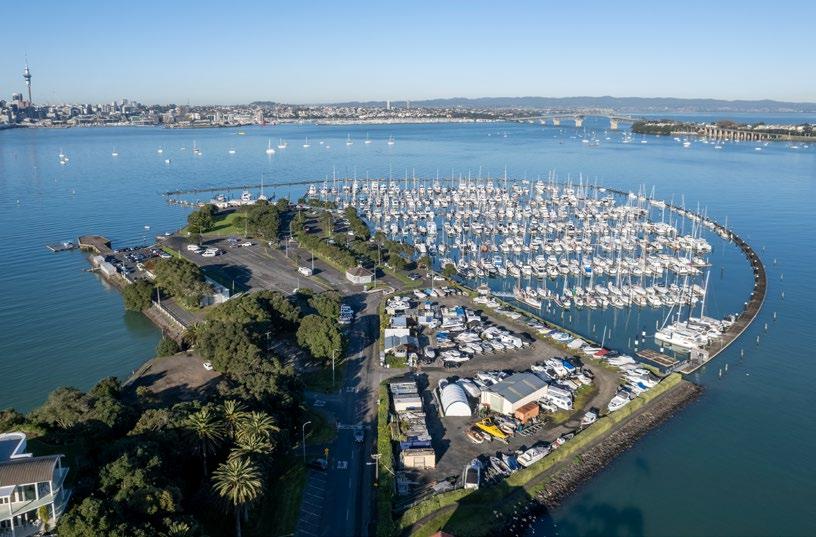

Q: How did your involvement in marina construction begin?
A: After graduating as a civil engineer in 1968 under a cadetship with Wilkins and Davies Construction, a company partially owned by Taylor Woodrow in England, I worked on numerous marine engineering projects in New Zealand, Samoa, Fiji, Malaysia and Borneo. In 1980, Wilkins and Davies (W&D) started a marina division and, as a keen boatie, I was asked to lead the operation.
Q: Where was your first marina project and what were the challenges in developing it?
A: The first project was Westpark, a 604-berth marina located in the upper reaches of Auckland Harbour. At the time – back in 1979/80 – there were only two marinas in New Zealand. Both of these had floating structures that utilised timber plank decking with steel tubes and glass fibre tubs for floatation. This didn’t suit my vision. I searched the world for a proprietary product and travelled to Bellingham Marine (BMI) in the USA and secured the South Pacific manufacturing rights for the patented Unifloat floating concrete dock system.
W&D and BMI developed a great relationship with the original owner of Bellingham Marine, the late Peter Gaasland and his chief executive Larry Halgren (now heading up Halgren & Associates). Over the years, I have always been a fan of concrete floating structures over other materials.
Q: Do you think completion of Westpark Marina focused the industry on marina opportunities?
A: The W&D marina division grew quickly with 60 staff! We carried out all aspects of development, from the initial site feasibility studies through design, marketing and sale of the berths, and construction. Yes, the projects came, including: Mana Marina (100 berths); Gulf Harbour (966 berths); Pine Harbour (550 berths); Buckland Beach Marina (100 berths); Bayswater Marina (440 berths); and Townsville Marina (200 berths).
During this time, we carried out many feasibility studies to determine whether or not a specific site had sufficient attributes to warrant the complicated and expensive planning and consent process, which at the time typically took between three and eight years in New Zealand. As a point of interest, this can now take many more years due to the increased hurdles a maritime project has to pass and the complexities with the environmental issues and cultural inclusion.
Q: Why did you leave Wilkins & Davies?
A: Unfortunately, W&D closed down following the brutal 1989 financial meltdown and this is when I continued on with marina development in my own right. Between 1989 and 1994, I owned and operated the construction company Marine Piling & Construction Ltd, with a partner, and completed a range of projects which required specialist plant and expertise, such as wharf construction in Auckland, Devonport Naval Base, Onehunga and the Chatham Islands. We also designed and built the Maritime Museum marina in Auckland and demolished the old floating structures at Half Moon Bay Marina and replaced it with Unifloat.
After 1994, Mair & Associates dedicated the team to the development of Orakei Marina in downtown Auckland, Opua Marina in the Bay of Islands and Tutukaka Marina. We were involved with Whangamata Marina and, in 2006, prepared the initial feasibility report for the proposed Sandspit Marina project. We consulted to Napier Yacht Club to boost berth sales and carried out a feasibility study for the proposed marina in Queenstown.
Q: Why do you think Orakei Marina Development is so successful?
A: We’ve earned the reputation of being New Zealand’s leading marina developer and I think we’ve been successful because we’ve kept control of all aspects of development within the group, which includes associations with at least 15 specialist consultants whose combined expertise has enabled us to successfully complete many difficult projects. Our projects have also been completed on time and on budget, using the right equipment. And we never go out for tender but negotiate the construction contracts with highly experienced companies.
We have the in-house resources to fund our projects and have the backing of the Bank of New Zealand. Legal documentation, including the registered prospectus to enable berths to be sold, is an extremely complicated and important component of the process and our legal team is highly experienced with this. Our marketing and sales people have the knowledge to sell the berth licences in sufficient numbers to eliminate financial risks.


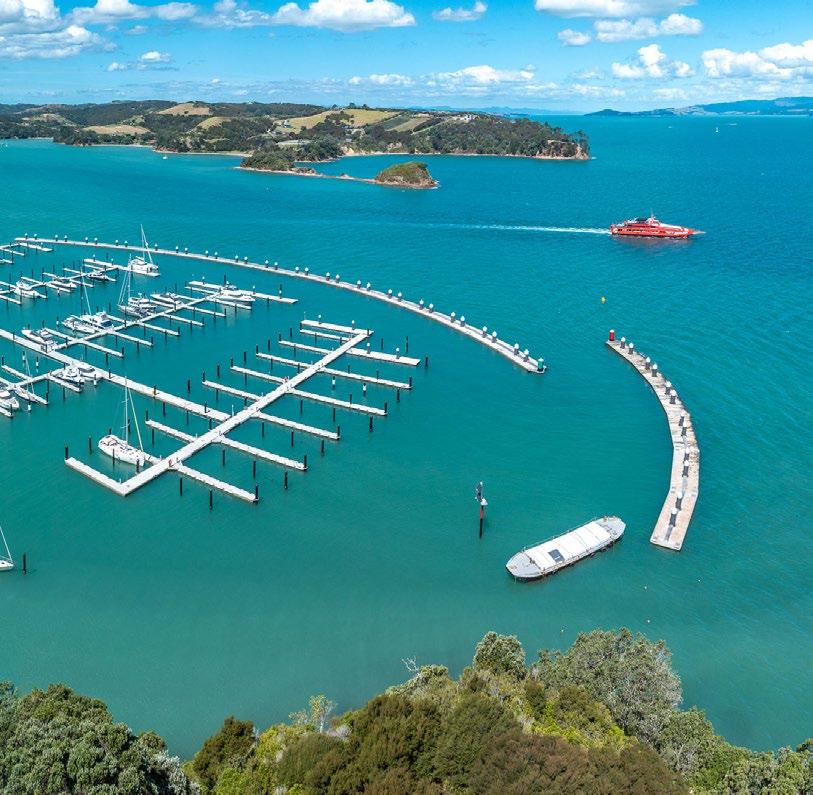

Tony Mair personally financed and coordinated a number of projects to completion throughout his career, including the green field marinas at Tutukaka, Opua, Orakei and, most recently, Waiheke Island Marina at Kennedy Point.
Waiheke called for significant innovation as it sits in ecologically sensitive waters, and made for a challenging finale to Mair’s career.
First, developers had to determine how best to shelter 180 marina berths from wave fetch and ferry wakes without disturbing a colony of ‘Little Penguins’. A traditional rock-pile breakwater would have impacted currents and the area’s delicate flora and fauna, together with deep water and a very soft seabed. Second, the marina project had no land, and all facilities needed to be floating, including the office and car park.
The solution included construction of possibly the world’s largest floating marina breakwater; an elegant arc that mirrors the scalloped coastline of the island. It was built by Heron Construction, which manufactured the huge breakwater sections under licence to SF Marina in Sweden and towed them 145km to the site. Mair says that his association with Lars Odhe and the team at SF Marina was rewarding and memorable.
The 460m of curved attenuators comprised 23 x SFBW600 series floating concrete pontoons, each measuring 20m x 6m x 4m and weighing 220 tonnes; six on the western section and 17 on the main portion. The pontoons have a draught of 3.4m with 600mm freeboard plus a wave splash structure. Each pontoon is held by two piles 35m long x 1.5m in diameter. The pontoons are connected via SF Marina’s patented coupling system that absorbs and distributes stress loads.
The floating office and 76-vehicle car park are built on top of 27 x SF1250 concrete pontoons stressed together. Like the attenuators, they are engineered to be exceptionally stable and unsinkable. Rainwater is channelled from the platforms and filtered before being returned to the ocean. Building on top of an SF Marina floating concrete platform is not new. In Sweden, a two-storey, 33-room hotel uses similar SF pontoons for its floatation.
Q: What do you think have been the biggest changes in marina development over the past 35 years?
A: Probably, the biggest change is the increase in berth size. Back in 1980, berth lengths ranged from 8 to 18m, with the majority at 10 to 12m. Today, berth lengths start at 12m and range up to 40m (excluding megayacht berthing) with an average length of 18m. Berth widths have also increased over this period.
In the eighties, power was supplied by small transformers with one 10 amp outlet for every two vessels whereas, today, the power modules start at 2 x 16 amp outlets up to 64 amp 3 phase plus a couple of 32 amp for each vessel.
Piling has changed. In New Zealand, the marina piles were initially tanalised treated pine and at Westpark Marina for example – which is now over 40 years old – the timber piles are still doing a fine job. Today, however, because the treatment doesn’t contain arsenic, the timber piles don’t last and require a plastic sleeve for protection against attack.
Galvanised metalwork has now been replaced with stainless steel, and concrete quality has improved. Construction equipment changed dramatically during my career. As a cadet engineer with Wilkins & Davies in 1963 we drove piles in New Zealand’s first marina in Auckland using a steam hammer. This progressed to drop hammers, diesel hammers and later “vibro” hammers.
Dredging was initially by clamshell and dragline with cutter suction being used at Westpark in 1982. Today’s very efficient and computer controlled hydraulic back hoes offer a huge advantage.
Mudcreting technology has made it possible to reclaim land utilising the soft marine silts as disposal at sea is now very problematic. Costs have also risen of course. When we started selling in 1980, the cost of a “licence to occupy” ranged from $12,000 to $50,000. Today, prices are $300,000 to $1,000,000.




ALFREDO S.P.A. Via Centro Industriale Europeo, 43 | 22078
+39 02963941 marinas@martinialfredo.it marinas.export@martinialfredo.it

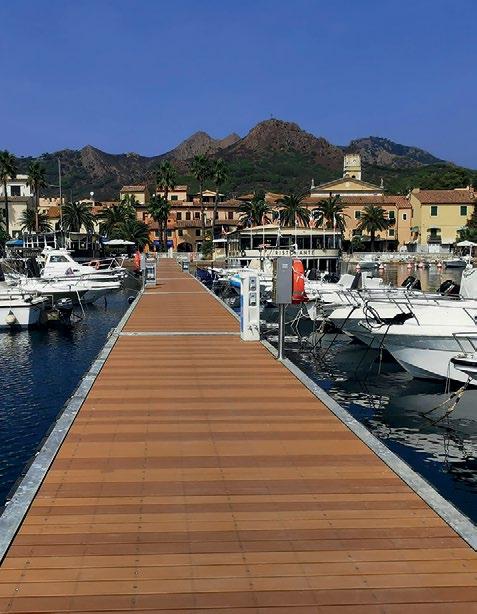

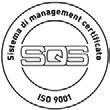


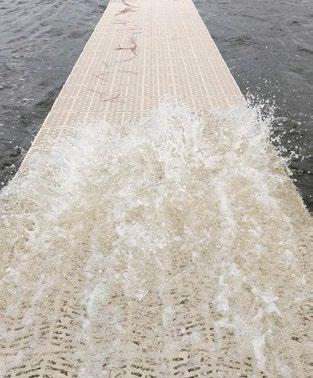








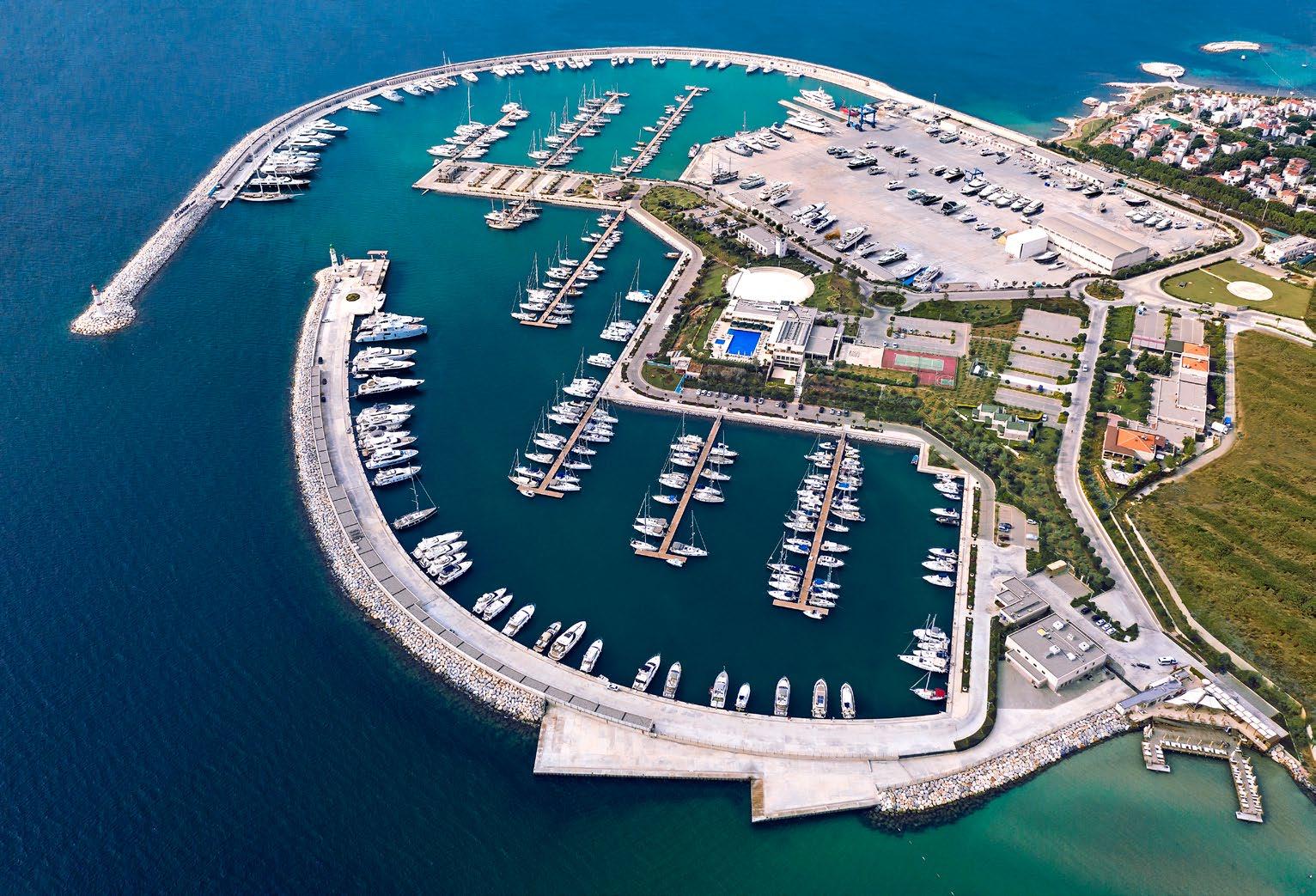
For many of us, artificial intelligence has become an integral part of our daily lives. We ask Alexa to play music, call on Siri for the weather forecast, use smart home technology to turn on the heating or dim the lights, generate text with ChatGPT or refine emails with Microsoft’s Copilot, and unlock all these devices with facial recognition; love it or hate it, the AI era is here. It’s in our workplaces, homes, cars, devices and social media feeds. But what about in marinas?
By Charlotte Niemiec
“We’re seeing increasing interest in how AI can solve real business challenges – not just in automating processes, but in providing genuine intelligence.”
The uptake of AI in the marina sector is growing rapidly, according to industry experts. Idan Cohen, co-founder and CEO of marina reservation software Pick a Pier, says the industry is seeing the early adoption of AI technology in larger, networked marina groups and regions with strong investment capacity – parts of Europe, the Middle East and the Mediterranean basin, in particular. “These networks have both the incentive and the scale to leverage AI effectively,” he says.
One such network is D-Marin’s. The company’s vision of developing fully “smart” marinas is rapidly becoming a reality across its network of 26 sites in the Mediterranean and Gulf region, due to its significant investments in digital innovation. Mattias Gehring, the company’s chief digital officer (CDO), explains that D-Marin is already advancing in this direction by investing in smart sensors, smart pedestals for energy and water supply, AI-assisted mooring and a comprehensive digital service ecosystem.
“More than 2,200 fully digitalised pedestals have been installed across our group, providing a robust infrastructure that supports automated processes and enables seamless integration with AI technologies,” he says.
While the benefits of AI are universal, scale accelerates adoption, says AI and business strategy expert Professor Moshe BenBassat. “Larger or premium marinas see the return on investment more quickly but, in time, we expect these technologies to cascade across the entire industry.”




More widely, however, AI’s use in the marina industry is in its infancy, says Cohen. Marina management software today mainly focuses on fundamental operational tasks, like reservations and billing, but the future holds much greater promise.
He explains: “We’re seeing increasing interest in how AI can solve real business challenges – not just in automating processes, but in providing genuine intelligence. For example, forecasting berth demand or understanding ‘Available to Promise’ – the live sellable inventory of berths – is where AI will be transformative. Operators need tools that move beyond data entry and into proactive, intelligent decision-making.”
Dan Nelson, Vice President of Product, Marine identifies where AI is already helping the boat rental and bookings company he co-founded, Stellar. “AI can flag underperforming areas of the business, identify revenue leakage or highlight spikes in operational costs. These tools provide marina operators with executive-level summaries that don’t just deliver data – they deliver actionable insights.”
Marinas are facing complexities familiar to many industries, says BenBassat, such as variable demand, fragmented systems and an evolving customer base. AI is uniquely positioned to address these by learning patterns and helping operators predict and optimise availability in realtime. “The industry is at an exciting tipping point,” he says.

The future development of marinas is getting more and more important and with it the Marina & Yard Zone at Metstrade. Now featuring a larger variety of product categories, the zone is the spot to showcase your latest innovations in leisure marine equipment, services and technologies for marina design, construction, and evolution. Your chance to meet project planners and developers from around the world scouting for what’s next. Whether you’re supplying systems, structures, services or specialized equipment for the development of existing or new marinas, this is the moment to elevate your business globally, so secure your spot today.
Secure your spot today
17 → 18 November 2025 The Superyacht Forum
18 → 20 November 2025 Metstrade RAI Amsterdam

One of the most exciting applications for AI in the marina sector is in predictions, such as forecasting boat arrivals, weather risks or maintenance schedules – and it excels in this area, allowing marina operators to plan proactively.
“While we’re not yet seeing widespread use for weather risks or predictive maintenance in marinas, these applications have proven themselves in adjacent industries and will naturally follow,” Cohen predicts.
“AI thrives on complexity,” explains BenBassat. With the right data, it can create algorithms that dynamically allocate berths based on boat size, customer preference and expected occupancy. Predictive models move us away from static schedules to flexible, realtime availability forecasting. Smarter berth allocation can help smooth marina traffic, which reduces congestion and improves safety.
Marina operators prioritise efficiency and AI can aid in making the most of limited space and resources, says Cohen. His company’s software, Pick a Pier, focuses on optimising berth availability and modernising the reservation process to create smoother experiences for boaters and marina staff. Using AI is “about creating a living understanding of the marina – understanding movements, reservations, cancellations and preferences, to optimise every available metre of water and dock space,” says Cohen.

Not just predicting boat arrivals, but “predictive maintenance is a huge opportunity,” he adds. Using data from sensors placed around the marina, AI can anticipate equipment failures before they happen, which is invaluable in an environment like a marina where downtime is costly.
D-Marin’s Gehring agrees: “Looking ahead, we anticipate greater integration of predictive analytics, AI-driven maintenance and operational planning reshaping the marina experience into one that is highly efficient, secure and customer-centric.”
While the industry is still early to the AI game, the potential to use Internet of Things (IoT) or “smart devices” is vast, says BenBassat. Integrating AI with IoT devices, occupancy sensors and drones creates a real-time, geographically aware digital model of the marina. Such integration will enable predictive maintenance and instant occupancy updates, and optimise movement across facilities.
“The technological foundation exists – it’s a matter of time and investment, and when rolled out we may see integration with drystacks, cameras, sensors, robots and drones,” he says.
D-Marin has already integrated smart sensor technology,
in collaboration with Sense4Boat, to monitor critical onboard systems such as batteries, temperature and bilge water levels. More than 10,000 boat sensors are in use by its customers already. These sensors instantly alert boat owners and marina staff when interventions are required. “Although AI predictive capabilities are currently under development, these smart sensors represent key infrastructure paving the way for future AI integrations,” says Gehring.
Another company actively exploring the benefits of AI is digital solutions company Smarter Technologies. It has developed a low frequency, scalable IoT network called ‘Orion, The Real-Time Data Network’, which connects seamlessly with smart devices to provide marinas with

instant access to critical data. For example, the company’s smart pedestals are equipped with lowpower wireless IoT technology that communicates directly with Orion, delivering real-time monitoring of assets and utilities, enabling operators to reliably oversee electricity, water and other services.
“Orion transforms marina operations into a fully connected, intelligent platform,” a company spokesperson said. “The result is streamlined management – from automating usage tracking to centralising control of multiple assets – reducing overheads, eliminating manual processes and enhancing the customer experience for berth holders and visitors alike.”

Thomas Mukamal, former CEO of IGY Marinas and a leading figure in the global marina sector, tells Marina World: “You can’t innovate at scale without connectivity and technology. Today, most players in the industry are operating in silos, using fragmented tools that limit visibility and potential. The opportunity [in AI] is in creating real connectivity across the sector – once we achieve that, we unlock exponential innovation and give space for new business models to emerge. Suddenly, innovators can develop scalable, cost-effective solutions that simply weren’t possible in the current setup.”
“Transformation doesn’t come from digitising old habits,” he adds, “it comes from building an ecosystem where collaboration and data flow freely. When the industry connects, new value chains open up, commercial opportunities multiply and we create the conditions for true growth. I believe we’re standing on the edge of a technological revolution, and I’m energised by where the industry is heading. With consolidation, scale and a focus on smart partnerships, we are setting the stage for meaningful accelerated change.”

“The essence of marinas is community and service. AI must be a co-pilot, not an autopilot. Used correctly, it empowers teams to deliver exceptional, personalised service at scale”

While some users enthusiastically embrace AI and its potential, others are more cautious. BenBassat believes there’s always a fear that automation will reduce human roles, but the goal is augmentation, not replacement. AI should take over repetitive, low-value tasks, freeing staff to focus on hightouch customer experiences. “Human connection is crucial in hospitality sectors like marinas,” he says.
“I fully agree,” adds Cohen. “The essence of marinas is community and service. AI must be a co-pilot, not an autopilot. Used correctly, it empowers teams to deliver exceptional, personalised service at scale.” The future is not just smart marinas, he adds, it’s connected ecosystems. AI will orchestrate berth allocation, customer experiences, operational efficiency and even sustainability goals. “We see this future very clearly, and we’re actively working to help the industry reach it.”
Yet there is undeniable resistance to change. Cost and data quality are real concerns, explains Cohen. Many marinas have limited digital records and, without clean data, AI systems can’t function effectively. There’s also a cultural resistance to change in parts of the industry, rooted in years of underinvestment in technology.
“Fully autonomous marinas are an exciting idea,” adds BenBassat, “but it’s not about removing humans. It’s about creating intelligent environments where operators and systems work hand-in-hand, delivering better outcomes for boaters and businesses alike.”
One solution is phased AI implementation, he suggests. “Start small, solve clear problems, prove value. This reduces perceived complexity and builds trust in the system over time.” In other industries, AI has significantly reduced manual workload – like dispatches in field services. When applied to marinas, it can do the same, which helps free up the team to focus on high-value, human-centred services.
The industry needs to build trust around AI, adds Cohen. Ways to do this include being transparent about data collection and usage, to help customers feel secure and valued, not monitored. BenBassat agrees that data privacy is paramount. “Any AI system deployed in this space must comply with regulations like GDPR and prioritise ethical data use.”
“It might feel complex and overwhelming,” says Nelson, “but AI is here to take the complexity out of your work. It’s what helps a manager figure out why certain slips sit empty, or whether launching a boat club or boat rental operation makes more sense than raising slip fees or renting kayaks. It takes the guesswork out of decisions that used to rely on gut instinct.”





Earlier this year, MAG Group Holding, a Dubai-based international real estate developer, was appointed by AD Ports Group as the lead developer for the first phase of Marsa Zayed, a significant waterfront resort and residential project on the Red Sea in Aqaba, Jordan. Marina World sits down with Mr Sar Haffar to find out more.
By Enrico Chhibber







Q: Can you elaborate on how MAG Group Holding became involved in the Marsa Zayed project?
“Recognising the advantage of our extensive experience in this field, they sought a partnership that is considered a ‘lethal combination’.”
Marsa Zayed, a 320-hectare development on the Red Sea, aims to transform Aqaba into a dynamic tourism and business hub. As Jordan's southern gateway, it provides easy access to key attractions like Petra and Wadi Rum. Supported by the UAE and Jordanian governments, the waterfront project aims to promote Aqaba as a regional tourism centre and a principal entry point to the Red Sea.
Marina World met with Mr. Sar Haffar, the Region Director for MAG Group Holding's project in Jordan in Dubai to discuss how MAG Group Holding got involved in this waterfront development. The conversation covered the project's objectives, its role within the broader development activities in the Red Sea, and future plans.
Our involvement was driven by a mutual benefit approach initiated by AD Ports Group. While they specialise in trade, industry and logistics, real estate development is relatively new to them. Recognising the advantage of our extensive experience in this field, they sought a partnership that is considered a 'lethal combination' - melding their operational expertise with our capability to invigorate the real estate aspects of the project.
The project itself is complex, encompassing diverse components that require varied expertise. AD Ports Group leverages its logistics and maritime expertise, critical for managing those elements of the development. Moreover, significant sections of the project are dedicated to entertainment, residential, and hotel facilities, which demand the focused attention of a seasoned real estate developer to create vibrant, functional environments. Our role at MAG Group Holding is to bring these areas to life, ensuring a dynamic and well-balanced development.
In addition, the strategic location of the site in Aqaba, a hub for both industrial and tourism activities, creates a unique dynamic for development. The synergy between these sectors, coupled with our well-established relationship with AD Ports Group, were key factors in establishing this partnership.

Q: Could you tell us more about the initial phase of the Marsa Zayed project, specifically the Riviera Heights development?
The launch of Riviera Heights at Marsa Zayed, marked the beginning of this ambitious development. Riviera Heights will feature four towers, offering a variety of residential options including one-bedroom, two-bedroom, and threebedroom units, along with luxurious penthouses.
During the initial stages of the project, we employed the cut and fill technique to prepare the terrain, ensuring it was optimally configured for construction and infrastructure development. This process was crucial when we first visited the site for the official announcement. Our efforts are closely coordinated with the ongoing infrastructure enhancements and the broader development of Riviera Heights.
Moreover, adjacent to this development, a significant project is taking shape: the construction of a scientific aquarium that will double as a research center. Developed by the Jordanian government in collaboration with AD Ports Group, this facility is designed to complement our developments, drawing more visitors and enhancing the area’s appeal.
These initiatives are interconnected, forming a cohesive strategy where each element supports and enhances the others. By integrating these developments with both functional and scientific features, we aim to create a comprehensive and attractive destination that will significantly boost visitor numbers and encourage local participation.
Q: Given the developments in Saudi Arabia and Egypt, do you view these initiatives as competition for Marsa Zayed, or do you see them as complementary?
These initiatives are complementary to the other operations that AD Ports Group manages in the Red Sea region, especially the cruise terminals. Such cruise activities stimulate regional traffic by bringing in visitors who do more than just stop - they explore.
This commercial activity greatly benefits the Aqaba region. The project’s proximity to historical sites, along with its entertainment offerings, creates a unique draw for tourists. They have the opportunity to visit nearby historical landmarks such as Petra and Wadi Rum in Jordan, and if time allows, they can also explore the Dead Sea.
Currently, we are not in direct communication with the major development projects happening in Saudi Arabia. However, from a strategic standpoint, we anticipate that our project will complement the other developments there such as NEOM, which is geographically closer to us than Jeddah, for example. Once our projects and the marina are activated, we expect to see an increase in land-based traffic from NEOM to Aqaba. Visitors will likely travel by car to explore what Aqaba has to offer.
Q: Any upcoming developments you’d like to unveil?
This is only the initial phase. Our plan is to develop the extensive 3,000,000 square-metre area of the project. Considering the current market dynamics, we recognise the necessity of a global marketing strategy, as relying solely on the local catchment would not suffice to support the project's full potential.
We are excited about the future and look forward to unveiling additional developments soon. This marks just the beginning of our ambitious collaborative efforts to transform this space.

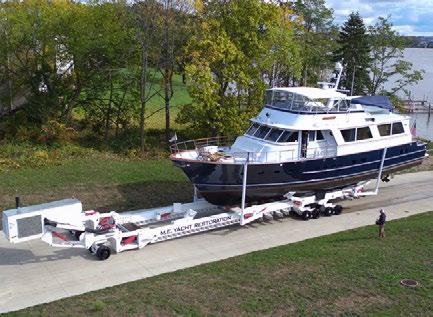


Mark Lavery, Associate Director – Retail & Leisure at UK company Christie & Co, gives an overview on asking prices, what they are, and how they are calculated.
Q: So, what is an asking price?
A: From a seller’s point of view, the asking price reflects the level of financial consideration that an owner may be prepared to sell his/her business for, and is used to guide prospective buyers towards a level of price. As you will read later, this can be calculated based on many different factors and variables concerning the business in question.

Q: Why do we have asking prices, and what does it mean to a vendor and a buyer?
A: Typically, an asking price for a marina is created by an appraisal process based on numerous factors relating to the business, including the likes of tenure, length of ownership, investment, financial performance and quality of earnings. Using a specialist leisure agent to provide comparable evidence of other marina sales to use as a benchmark will give potential vendors an understanding of the current market and help inform them of the level of asking price that would be appropriate for their business. The vendor can then use this information to review his/her options about coming to market and whether any pre-disposal actions are required before taking the decision to sell.
The asking price for a business gives potential buyers a guide as to the vendor’s expectations. The level of price will determine whether this is something they can afford to buy, or not. In our experience it is generally more efficient to quote an asking price rather than listing a marina asset as ‘Offers Invited’ as it demonstrates a definitive price point from the outset. Of course, there will be times when an ‘Offers Invited’ approach will be most appropriate – for instance, when a business may not have been offered for sale for many years, or if the type of business could appeal to several different buyer groups, or incorporate a number of development opportunities which different buyer groups may price differently depending on their individual investment criteria. Whichever the case, it is therefore good practice to get the advice of a reputable agent who knows their market.
A: If a marina operator decides to sell an asset, it is critical that an appropriate price is agreed at the outset. Ultimately, the vendors will want to ensure they achieve the best possible price for their business and therefore an asking price that can drive interest and, by definition, competitive tension, should be the objective of a quality selling agent.
So, what is the best way to ensure you obtain the correct pricing advice for your asset? The answer undoubtedly would be to employ the services of a commercially aware sales agent - someone who has a track record of successful marina and marina-based business sales. As the marina world is quite a niche sector within the wider leisure market, with its unique traits and operating processes, an agent with knowledge and experience in this sector is vital going forward if a vendor is considering going to market.
Pricing advice is dependent on many factors as we mention above, with the financial performance over the last three years most relevant. The location and size of the operation, which will include the number of berths available, along with the scope of the hard standing facilities available, will also be factored into the pricing. Additionally, the importance of a robust on-site maintenance programme cannot be overlooked. A wellmaintained marina is critical to any sale being agreed, such is the nature of the business, being located outdoors and often bearing the brunt of unpredictable weather. Does the business have additional income streams from third-party occupiers and are there deliverable opportunities to develop and grow the business, either as stands or through obtaining any necessary planning permissions? In conclusion, there are a lot of factors to consider within your business before going to market.
Fortunately, in the marina sector, there is an agreed methodology as to how to arrive at an asking price. Marinas are more often than not appraised using a profits method. This method uses an appropriate multiplier number attached to the adjusted fair maintainable trading profit (FMT) of the business to demonstrate pricing parameters. Interrogating the accounts for the business, an EBITDA value (Earnings Before Interest, Taxes, Depreciation and Amortisation) is calculated. A multiple is then applied to this EBITDA value to show where the pricing range for a business may realistically sit. This multiple is calculated taking into account all the variables discussed above, and as such, the range of multiples attached to marina values can differ considerably, which is evident when you look at the various sizes of marinas across the UK, along with their different offerings and locations.



All marinas are inevitably different, and additional factors must be considered when preparing for sale. Key indicators for potential buyers would include the following:
Third-party leases/concessions on site. It’s key to consider the length of lease agreements, what the operations are, and whether they are complementary to the overall marina operation, e.g. riggers, brokerage or chandlery services
Whether there is a dredging seabed maintenance schedule in place to allow for optimum chart datum, which is critical to some marina operations
How long the marina has been under its current ownership and the reason for the sale
Whether there is any accommodation on site, which may be important for remotely placed marinas
Whether there is potential to grow the business. For example, is there potential for additional berthing or hard standing? How much will the investment cost versus the return?
Has there been planning consent on site that may be commercially viable and attractive to a new incoming owner?
You will see that one size does not fit all, and each marina will be different in some way from its nearest neighbour. It may be owned on a ground lease basis or as a freehold. It may be a small inland marina or a substantial coastal operation in a key location. Either way, it is imperative to employ the skills of an experienced agent to help you navigate through the appraisal process and provide the best pricing advice for you to come to market with, and ultimately aid you during the conveyancing period towards a sale completion, whether that be as an asset sale or a share sale.
mark.lavery@christie.com
Facing page and


Safe Harbor Marinas Acquires Christophe Harbour Marina
Safe Harbor Marinas has purchased Christophe Harbour Marina on the Southeast Peninsula of St. Kitts. The acquisition was announced by Christophe Harbour Development Company, alongside the Darby Family and the Government of St. Kitts and Nevis. The acquisition also marks a new chapter for the marina as it aims to meet rising demand for superyacht facilities in the Eastern Caribbean.
Currently offering 250 berths, including 50 dedicated to superyachts up to 76-metre, the marina benefits from a protected inner harbour and location between Antigua and St. Maarten. Safe Harbor plans to expand capacity for vessels up to 107-metre, upgrading infrastructure with deepwater berths, 24/7 access, in-slip fuelling, on-site customs and VIP clearance for yachts and private jets.
Charles ‘Buddy’ Darby III, CEO of Christophe Harbour Development Company, said: “With this transition, we remain committed to the long-term success of the community while entrusting the marina to a team with a shared vision and the resources and expertise to enhance its offerings.”
Safe Harbor’s CEO Baxter Underwood added, “We are pleased to be able to serve the global fleet in this important region with an offering of such high quality.”
Prime Minister Terrance M. Drew welcomed the development, stating, “We welcome Safe Harbor Marinas and look forward to the opportunities this partnership with Christophe Harbour will unlock, from job creation and tourism growth to enhanced global visibility for our Federation.”
Safe Harbor’s acquisition builds on its recent purchase by Blackstone Infrastructure for $5.65 billion USD, positioning the group for accelerated growth across North America and the Caribbean. The future of Christophe Harbour Marina promises upgraded facilities, increased superyacht capacity and a solidified position in the international yachting community.


The Hinckley Company has added Campbell’s Boatyard at Bachelor Point in Oxford, Maryland to its growing network, strengthening its presence on the USA’s Eastern Shore.
Campbell’s Boatyard is recognised for its deep-water access, full-service offerings and boatbuilding expertise. With the expansion, Hinckley aims to uphold Campbell’s reputation for craftsmanship while offering its clients expanded service capabilities and access to a broader support infrastructure.
Campbell’s Boatyard offers 75 and 25-tonne travel lifts, full-service repairs, and indoor and outdoor storage. The facility accommodates vessels from 6 to 138 metres with annual and transient slips. Amenities include WiFi, showers, laundry, dinghy storage, picnic areas, and complimentary bikes.
Campbell’s existing team will remain in place to maintain continuity and service quality. Campbell’s three boatyard locations allow collaborative work across specialised teams, now supported by Hinckley’s technical resources and concierge-level service.
The addition is part of Hinckley’s broader strategy to grow its service network along the East Coast, which includes sites in Maine, Rhode Island, Georgia, Florida, Annapolis and other Chesapeake Bay locations.
CEO of Hinckley Gavin McClintock said, “This is more than a strategic acquisition; it’s the alignment of two companies that believe in doing things the right way and in taking care of boaters the way they deserve. We’re proud to welcome Campbell's team into the Hinckley family.”
Tom Campbell, owner of Campbell’s Boatyard, affirmed the alignment between both companies: “We’ve built our reputation on attention to detail, honesty and knowing our customers by name. Joining Hinckley allows us to keep those values intact while expanding what we can offer.”
Marinedi Group has acquired a majority stake in Marina di Brindisi, solidifying its role as part of the group’s expanding network across the Mediterranean.
Situated on Italy’s south-eastern Adriatic coast, the marina offers 638 berths ranging from between six and 35-metre, with capacity for vessels up to 90-metres in length. Facilities include 24-hour security, a fuel dock, VHF radio support, Wi-Fi, a concierge, parking, restaurants, shops and an event square with an amphitheatre.
The acquisition finalises a process that began years ago, when Marinedi stepped in following the financial difficulties of Marina di Brindisi’s former majority shareholder. The intervention helped maintain operational continuity and prevent the revocation of the marina’s state concession. Over the course of three years, the marina saw a revenue increase of more than 90% and an occupancy rate surpassing 80%. Marina di Brindisi had already joined the Marinedi Group in practice prior to the formal acquisition.
Renato Marconi, CEO and founder of Marinedi Group, said, “This acquisition represents the conclusion of a process that has made it possible to safeguard the future of the port concession company and ensure its development. Today, with full control and financial security in place, we can look to the future with a long-term development plan.”
Founded in 2013, Marinedi Group now manages approximately 5,700 berths across multiple locations in the Mediterranean. The acquisition aligns with Marinedi’s long-term vision of creating an interconnected network of marinas across the region.

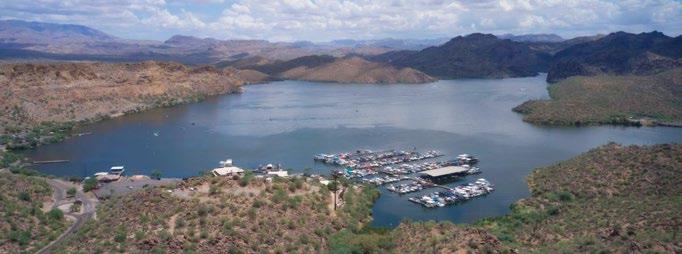
Suntex Marina Investors LLC has added Saguaro Lake Marina in Mesa, Arizona to its portfolio, marking its third marina and third boat club in the Phoenix metropolitan area.
Located within the Tonto National Forest, the marina offers direct access to Saguaro Lake, a popular recreational destination formed by the Stewart Mountain Dam in 1930. The lake spans over 22 miles of shoreline and is a yearround spot for boating, kayaking, sailing and fishing.
Saguaro Lake Marina, positioned in the Saguaro del Norte Recreation Site, provides slip sizes ranging from 7 to 12-metre. Amenities include covered slips, dry storage, a fuel dock, pump-out stations and a ship’s store with marine essentials. The facility also offers electricity, fresh water and on-site marine services with essential hardware support.
Beyond its boating services, the site features a waterfront dining venue, catering to both boat owners and recreational users. Rental options are available for visitors seeking to explore the lake without owning a vessel.
Mike Warntjes, Senior Vice President of Operations at Suntex Marina, stated, “This region has proven to be a magnet for tourists and locals alike who enjoy the outdoor activities provided by Saguaro Lake. The marina is an established facility representing a fantastic opportunity for us to offer the guest-centered Suntex experience visitors have come to expect at our properties.”
Suntex now operates marinas across more than a dozen states, including California, Florida, Texas, New York and Virginia.

A new feature has been added to Pacsoft’s marina management software to simplify the berth reservation process. Marina customers can now book, pay, and provide all required vessel documentation online.
Via the add-on booking module, marinas can introduce booking screens on their websites using an API or their existing PacsoftNG customer portals. Customers can reserve berths using an intuitive calendar interface showing berth availability.

Pacsoft general manager, Sean Cocks, says that the new feature can transform how marinas handle short-term stays, creating a seamless booking experience for both operators and their customers. “Putting the power in the hands of boaties to select dates, book berths, and make payments online, eliminates unnecessary administrative work and lets marina staff focus on delivering exceptional service to their clients.
“The booking module provides enhanced visibility of upcoming berth availability, improved cash flow through immediate online payments and better customer service through 24/7 booking capabilities.
“PacsoftNG’s customer portal already allows marina customers to update personal details, upload required documentation, and digitally approve contracts from any device, so the addition of booking functionality makes it a complete solution,” he notes.
Port of Newport’s recreational marina in Oregon, USA is among several marinas to have made trials with the module, using it to enable guests to book berths and RV parking spaces.
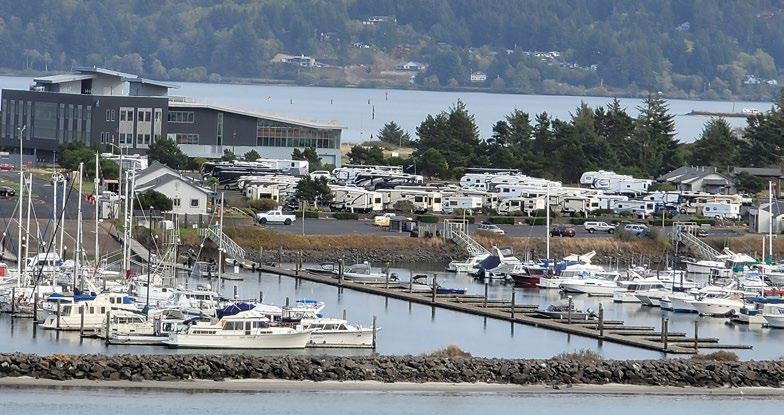
US company Maptech, an industry-leading provider of marine navigation chartbooks, digital navigation charts and many other marine navigation tools, has launched a harbour drone video programme. The new videos display coastal details that are not available from satellite or high-altitude aerial imagery for an easier and more approachable understanding of new harbours and facilities. Maptech currently has over 100 videos and is adding more all the time.

Satellite images and charts often fail to provide details that can be seen from the helm. The Maptech videos help the boater “see what they will see” when visiting a harbour or marina, including buoys, landmarks and important locations like fuel docks. The videos are easily accessible through QR codes in the Maptech Embassy Cruising Guides and online via MoreMaptech. com – a free site that provides comprehensive marine facility information to complement the videos.
Both marinas and boaters can benefit from the harbour drone videos. Marina operators can showcase their facility and harbour, and provide a convenient way to explain to boaters how to approach the marina and fuel dock by following the aerial view of the property. For boaters, it’s an easier way to visualise landmarks when visiting a new marina and view the approach and channels leading into the harbour.
“Maptech’s harbour drone videos are the answer to what both boaters and marinas have been asking for,” says Lee Estes, Owner and President, Maptech. “We’re proud to offer our customers this new technological resource through our mission to help boaters feel more confident, explore new places and operate more safely. This is truly a win-win for boaters and marinas.”
SF Marina has partnered with fellow Swedish company Malte Group AB to develop the SF Refuel Dock, an innovative floating marine fuelling station designed to meet the strictest environmental safety regulations for use in sensitive waters.
Fitted with automatic onboard systems that manage fuel spills, and numerous leakage sensors, the dock meets rigorous Swedish NFS 2021:10 and MSBFS 2018:3 regulations.
Based on the SF Marina 1240 floating concrete pontoon, the Refuel Dock provides a low centre of gravity and exceptional stability, and has a modest 0.6m freeboard to give a wide range of vessels easy dock access. It can be anchored with chains and concrete blocks or standard piles. With lengths from 15 to 31m, the entire structure can be transported by road or water.
Internal configurable fuel tanks can store a wide range of fuel types in up to four chambers. This makes it possible to offer niche fuels, such as hydrotreated vegetable oil (HVO) and methanol, in economically sustainable volumes. In total, the pontoon holds from 10,000 to 60,000 litres, depending on its length, and tanks can be further partitioned into smaller sections according to requirement.

Suitable for manned or unmanned operation, the dock’s Malte fuel dispensers and pumps are simple for owners and employees alike to use and, by delivering efficient logistics, the dock meets consumer demand while supporting profitable operations.
“This partnership is an exciting development for both companies,” says SF Marina Design and Brand Manager Lina Odhe. “The project allows virtually any marina the ability to expand their services by providing primary or secondary fuel service. And because the SF Fuel Station is self-contained, installation is quick and straightforward.”


French company Rotax Marine has joined forces with USbased Snap Dock to bring a range of modular docks and jet ski platforms to Europe, the Middle East and Africa.
The synergy between the two companies is ideal. Rotax Marine has over 25 years of experience in rotomoulding (the process of producing hollow, seam-free plastic components) and has a well established reputation for delivering unsinkable floats and mooring and marker buoys. Since 1999, the company has manufactured the equivalent of 150,000 tons of floating components for use in harbours and marinas all around the world. Snap Dock is a major American player in floating modular solutions, and the designer of the docks and jet ski platforms that it now markets in the USA and Canada.
Made of recyclable polyethylene – Rotax Marine is committed to environmental transition and only works with 100% recyclable materials – the docks and platforms can be assembled and adapted to suit any requirements, making them highly modular and easy to install. Designed to last, with an eight year warranty, they can be used as both permanent and temporary installations and can be adapted to suit the seasons.
There are multiple applications in the leisure and maritime sectors. For harbours and marinas, the products create moorings for small and medium sized leisure boats; commercial docks; nautical event bases; seasonal moorings; and infrastructure for sailing clubs. They can also be used to create floating walkways, swimming platforms and floating pools, and floating retail areas as part of waterfront developments.


Manufacturing from its factory in Ain, France, Rotax Marine has developed two dock models: 1m x 1.5m and 1.5m x 2m.
The jet ski platforms are of unique two-modular construction, which simplifies handling and installation/removal operations. Once assembled, the platform measures 4.3m long, making it one of the longest on the market.
All of the modular installations can be equipped with a wide range of accessories, such as mooring cleats, handrails, ladders and gangways and are available directly from Rotax Marine or via online sales specialist All Nautica (both companies are part of Wearth Group).
Rotax Marine has invested in specific industrial equipment in order to manufacture the docks. Polyethylene is a material suited to saline environments and, thanks to the rotomoulding process, forms a single piece with no seams or glue, ensuring excellent resistance and a better finish. The TPV composite rubber used in the connectors is borrowed from the automotive sector. This synthetic rubber, known for its strength and resistance, means that the connection system is more flexible and robust than competing products.
“This new range reflects our desire to go even further in the solutions we offer to our customers in France and around the world,” says Wearth Group Growth Director Christophe Sauné. “Building on our more than 25 years of expertise in the floating market, our core focus is to offer responsibly designed, robust equipment created with all uses in mind. The modular dock market is booming, and it will ultimately represent €3-5 million for Rotax Marine. It’s a real development opportunity.”
Snap Dock founder and President, Blake Elder, adds: “Our goal at Snap Dock has always been to connect and empower people to live their best lives on the water, and our partnership with Wearth Group and Rotax Marine allows us to leverage their knowledge, network and manufacturing capabilities to do that in a more global way. Rotax Marine’s focus on quality made them a perfect fit for our brand and we are excited to work with their talented team.”
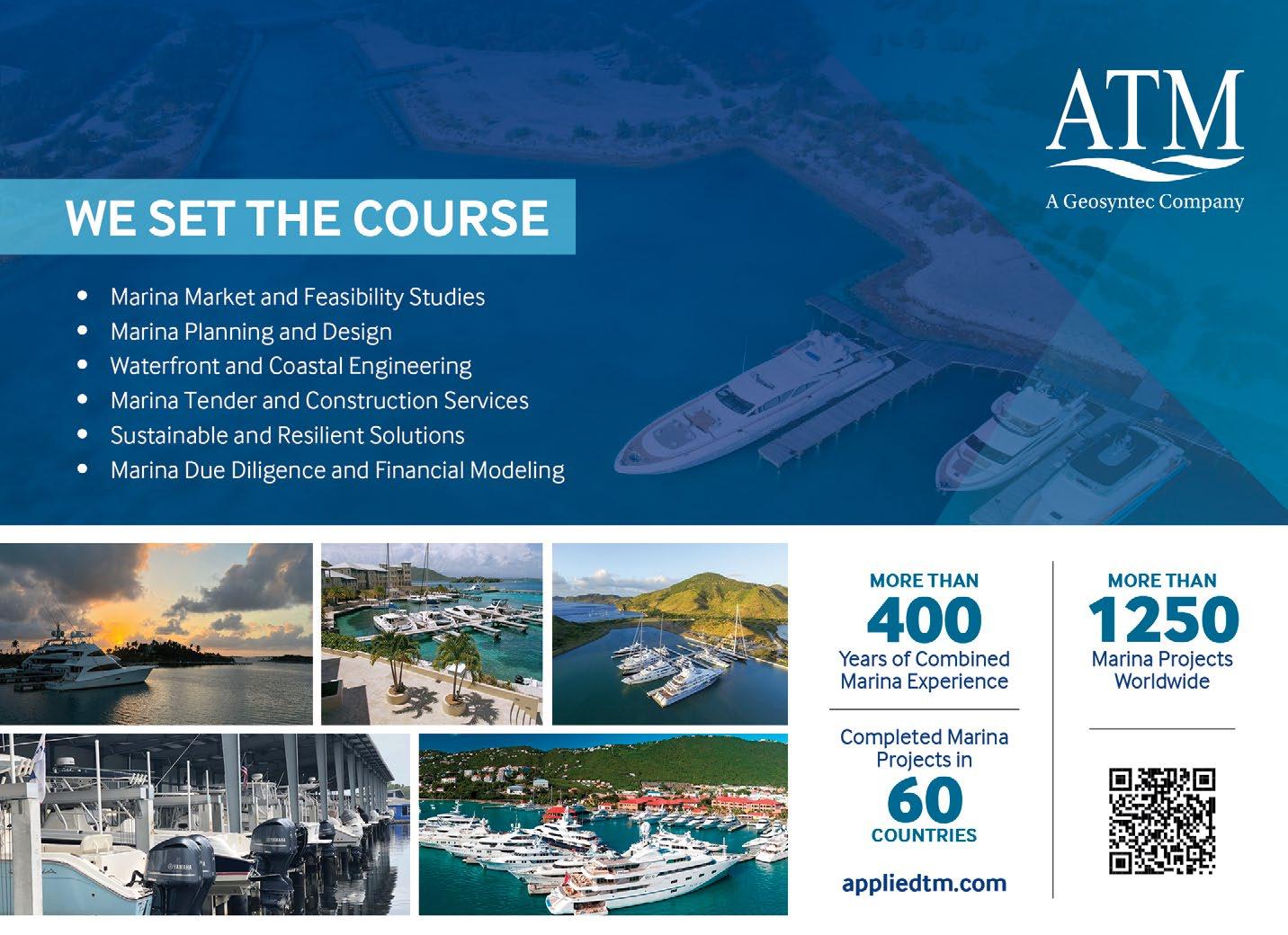





US-based Mack David Buildings, manufacturer and designer of custom-built marina dry storage buildings and outdoor racks, has introduced carbon fibre enhanced Mack Daddy Bunks; new bunk boards that could be a game-changer for the industry.
Designed for both outdoor and indoor use, the bunks are produced in partnership with CF Span Structural Solutions, an expert in custom-tailored carbon fibre engineering, and are claimed to offer a level of performance that shines in comparison to traditional timber bunk boards: 25% stronger; 40% lighter; waterproof, submersible and weatherproof.
In addition to offering considerable durability and strength over wood, the bunks can be customised with inbuilt logos, enabling the marina to showcase its brand while enhancing its storage infrastructure. Boards can be retrofitted in existing racks or positioned in new infrastructure.
"With the launch of our Mack Daddy Bunks, we're setting a new benchmark in marina dry storage," says David Coyle, President of Mack David Buildings. "This pr oduct addresses long-standing challenges in the industry by providing a more robust and sustainable alternative to traditional wood bunks. This is truly a solution that is a game-changer for the industry."
Advertisement
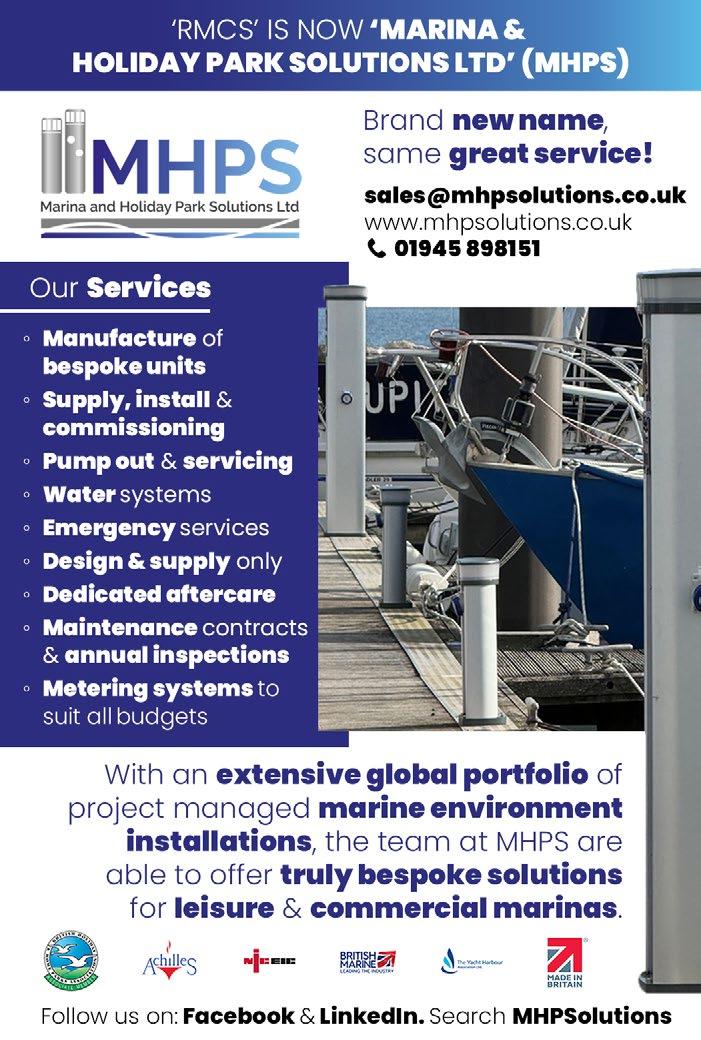


Mack Daddy Bunks are also designed to integrate seamlessly with Mack David Buildings' quick-release bolt and adjustable ground stand system, a tool-free design that allows for convenient, safe and efficient adjustments for a variety of boat sizes.
These features combine superior durability, ease of use, and branding opportunities, offering a long-lasting solution for marina operators and owners, who are tired of the cost of replacing timber bunks that shrink, warp, crack, break, or attract termites.
"We are committed to assisting our customers in discovering innovative structural solutions utilising carbon fibre," notes Willie Rytlewsky, Co-Founder at CF Span. "Collaborating with David Coyle on the new bunk boards was a natural choice, given the exceptional properties of carbon fibre. Its strength, plus weather and chemical resistance, low thermal expansion, and remarkable imperviousness to water, wind and rain, make it an ideal material for the marina environment."
The boards are sufficiently robust to support a wide range of boat sizes and types, and their enhanced strength and reduced weight not only improves safety but also reduces environmental footprint through the use of recycled materials and by minimising the need for frequent replacement.
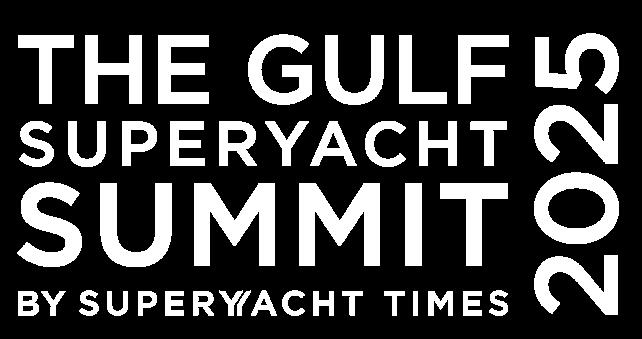










A new solution for utility and energy management has been released by Spanish company Gsertel. Named Triton, it has been designed as an ultimate all-in-one solution to enable marinas to be operated sustainably and efficiently.
Technically precise but user-friendly and specifically created for nautical environments, Triton by Gsertel reduces costs while delivering operator control. System features include:
Real-time centralised monitoring of all supply points
Remote control of water/electricity outlets, allowing remote activation/deactivation of supplies by both users and marina staff
Detection of anomalous consumption, with immediate alerts for unauthorised usage
Anti-theft protection for electricity
Eco-efficiency (dynamic resource optimisation reduces ecological footprint by matching real demand)
Complete user management with integrated payment systems
Precise billing based on actual consumption
Streamlined transactions (faster payments and invoicing)
Open API for third-party platform integration
Offline mode capability
Automated operational reports
Improved user experience (customers manage supplies through an intuitive app with complete consumption/billing transparency and queue-free automated payments)
Every system is customised to suit each specific marina and is suitable for new or refit projects. Due to its scalability, it grows as the marina grows making it future-proof if the marina expands. Installation is simple and the system is compatible with existing infrastructure, and the intuitive interface makes for minimal staff training.

Triton has already been installed in several leading marinas, including Hondarribia and Port Calanova in Spain: Ocean Village, Fardon and Dover in the UK; Dun Laoghaire in Ireland; Antiparos in Greece; Marina Fredericia in Denmark; and Port de la Mer in Dubai.



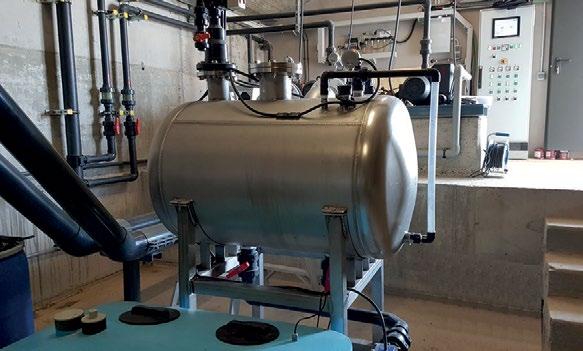
Vacuum sewerage systems are ideal for use in marinas and ports of any size.
The Flovac system can capture sewage and bilge water from boats and all facilities around the marina complex.
No electrical power required at dockside
Discreet, small diameter pipework
No risk of water contamination
Validates MARPOL certification
Eco-sustainable system
Ease of installation
No odour, no spills



CONCEPT DESIGN & MARINA MASTER PLANNING
MARINA FEASIBILTY STUDIES & MARKET RESEARCH
MARINA BUSINESS PLANNING
WATERFRONT & MARINA DESIGN
MARINA PROCUREMENT & PROJECT MANAGEMENT
OPERATIONAL & MANAGEMENT SERVICES
ENVIRONMENTAL & LEGISLATIVE ADVICE
PROPERTY CONSULTANCY SERVICES
GLOBAL WATERFRONT & MARINA
CONSULTANCY AT ITS BEST